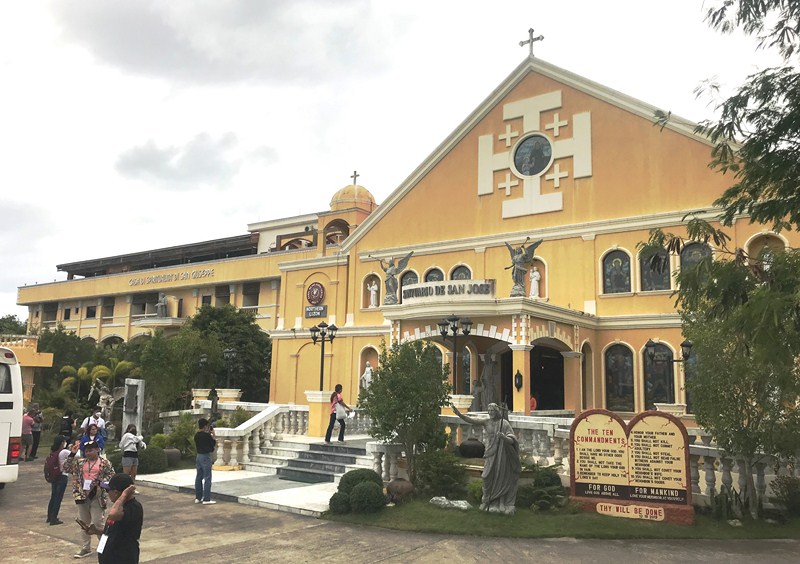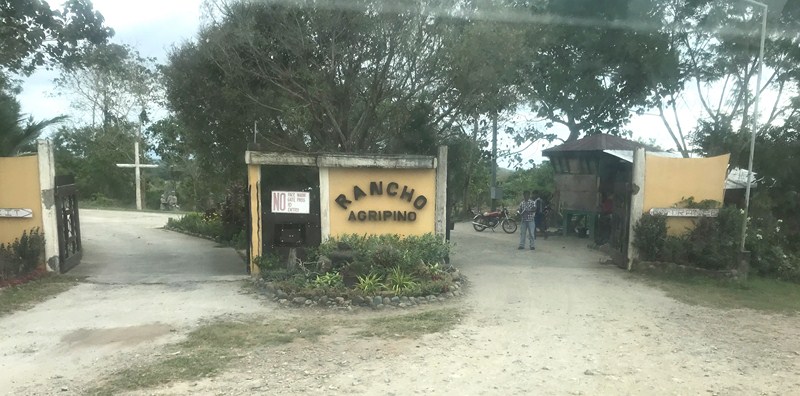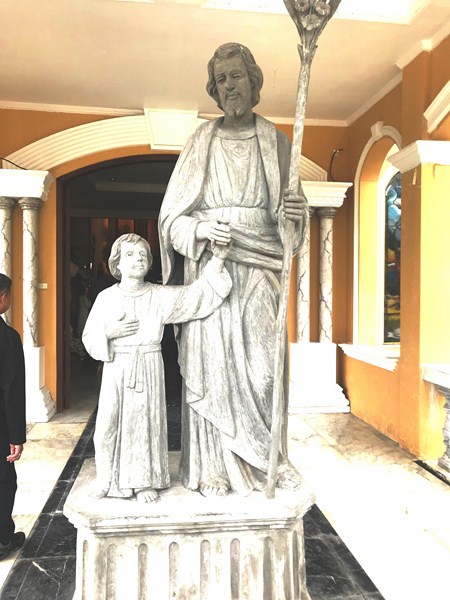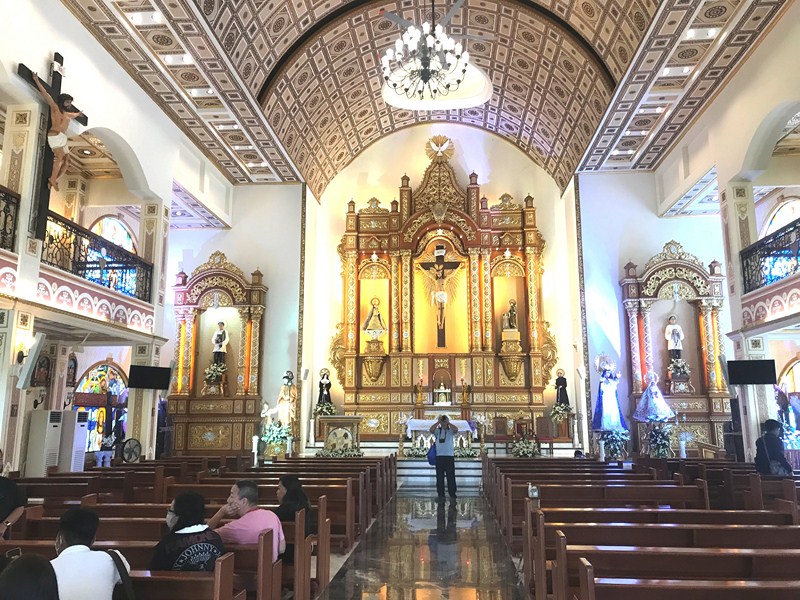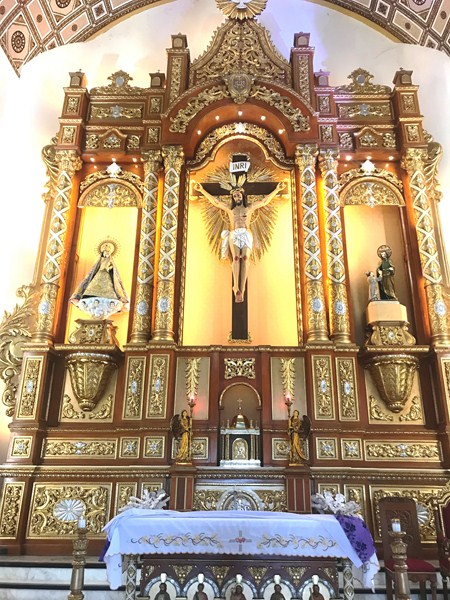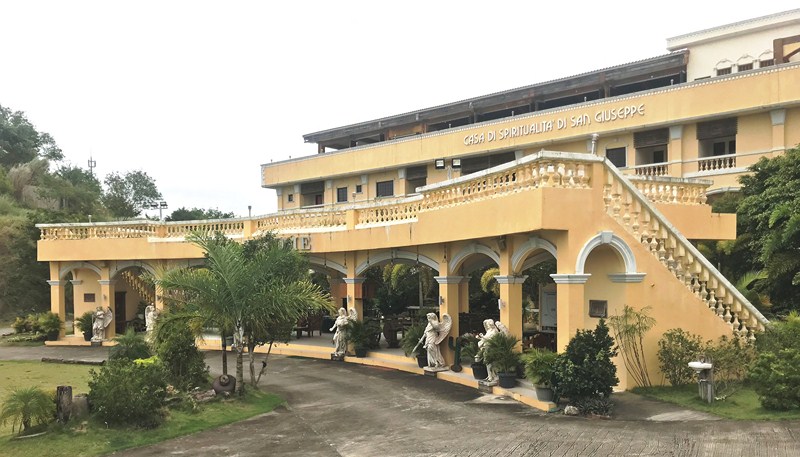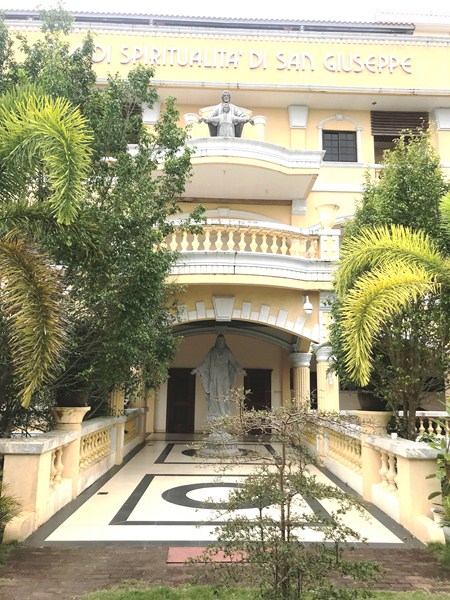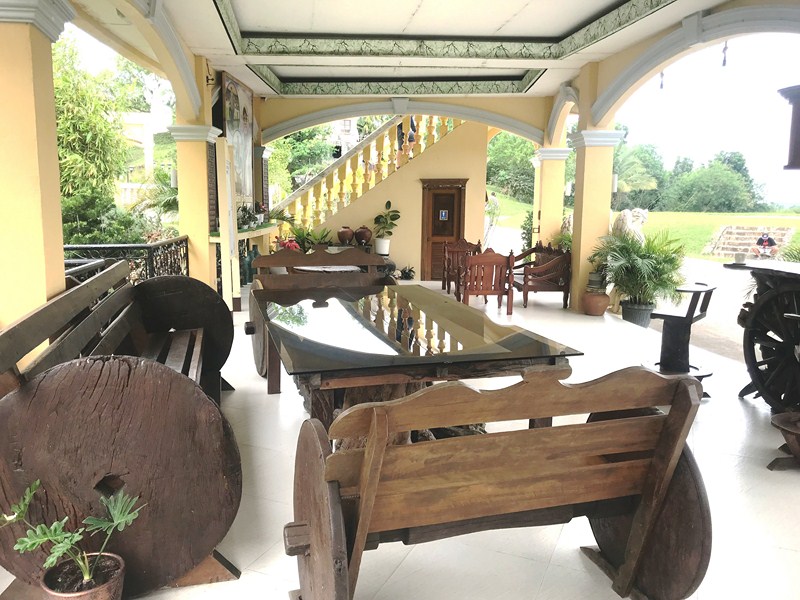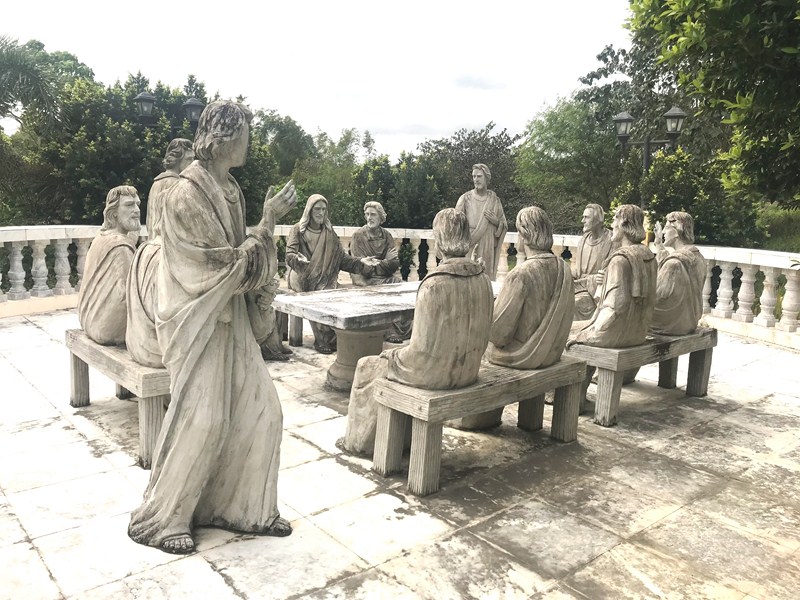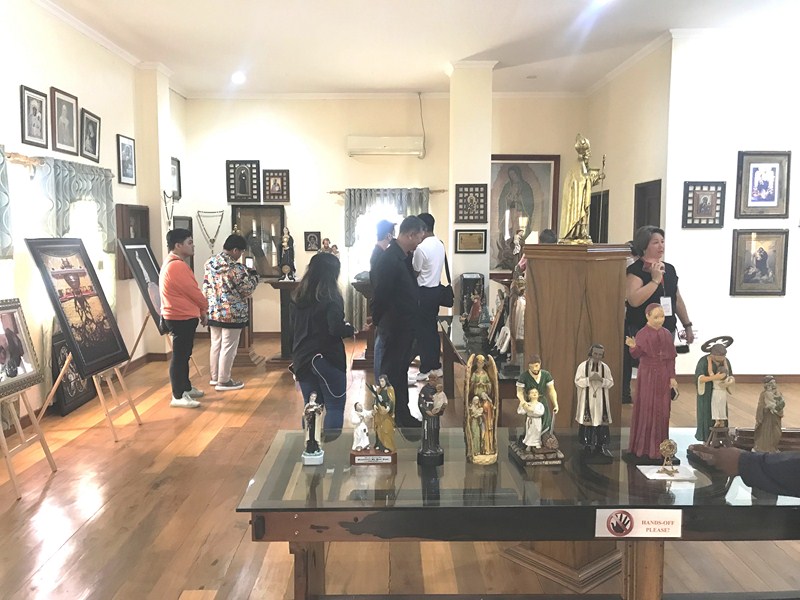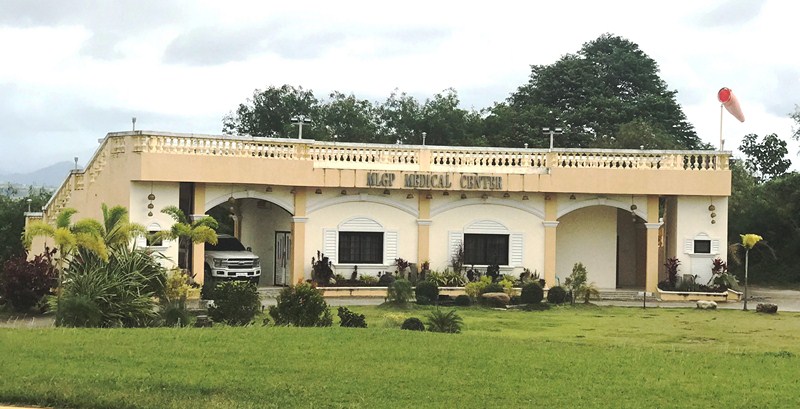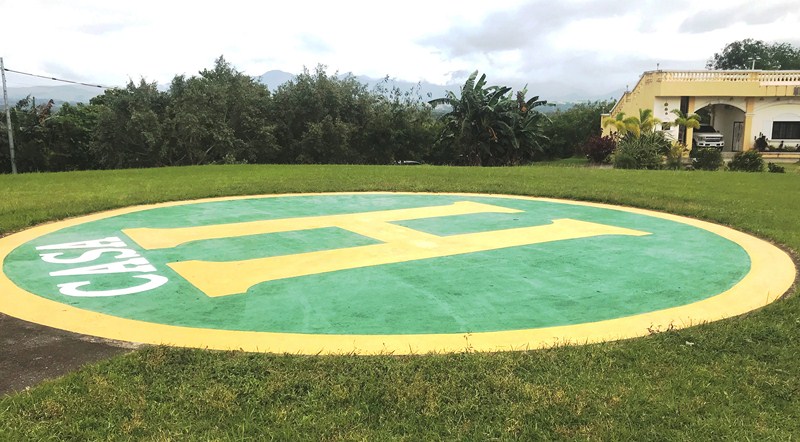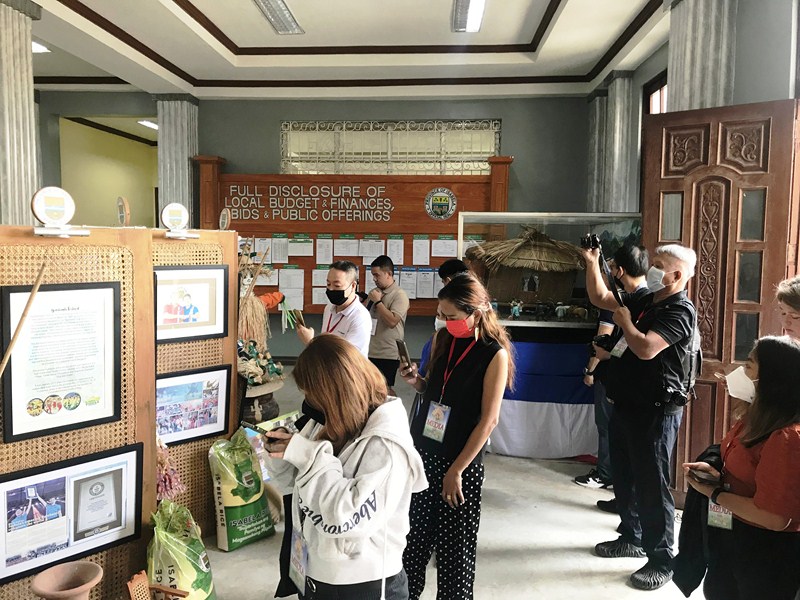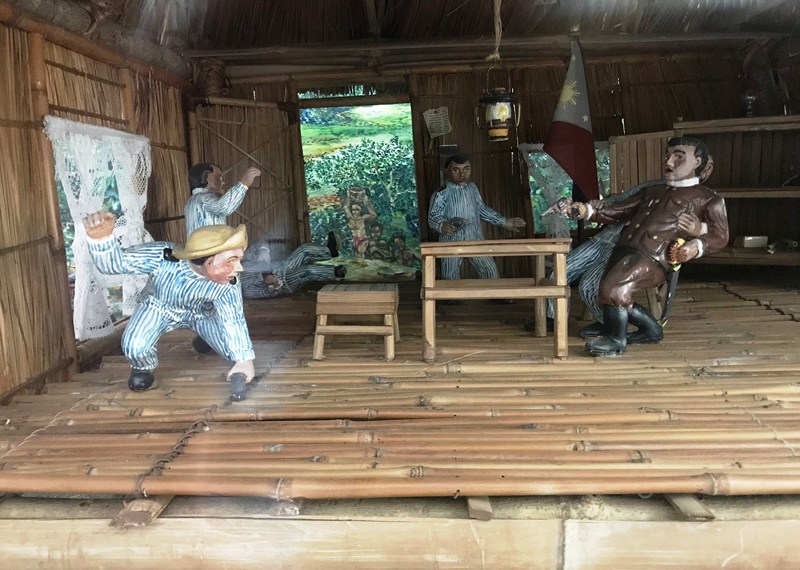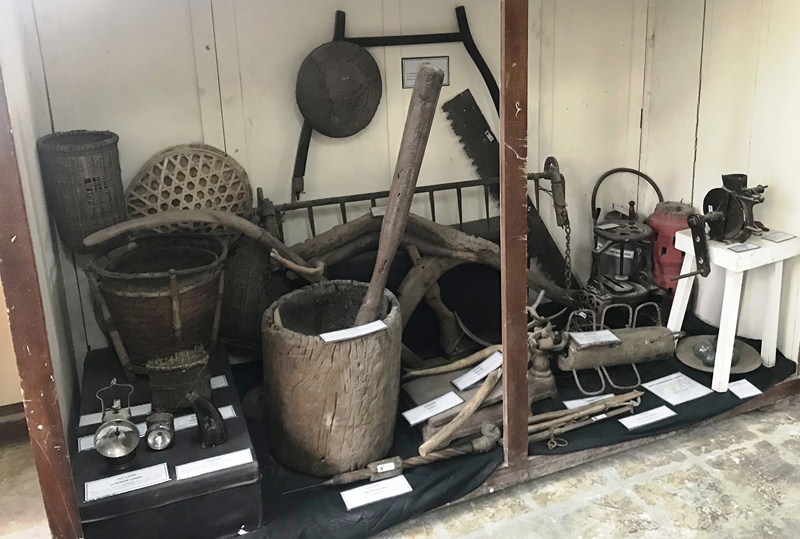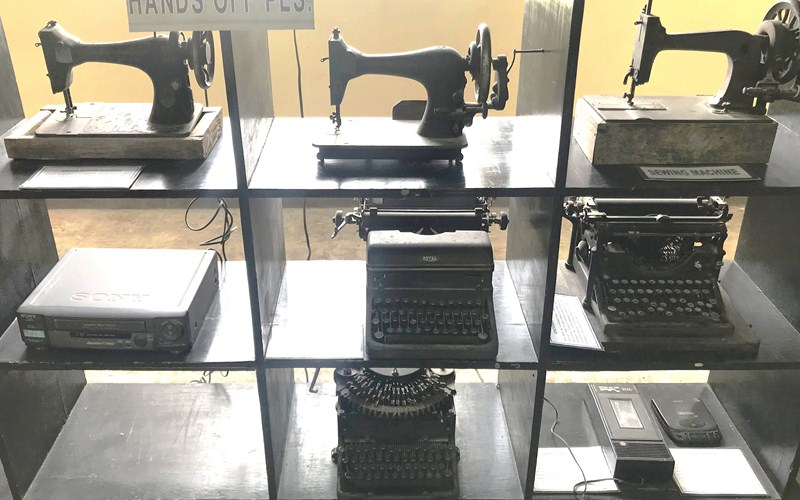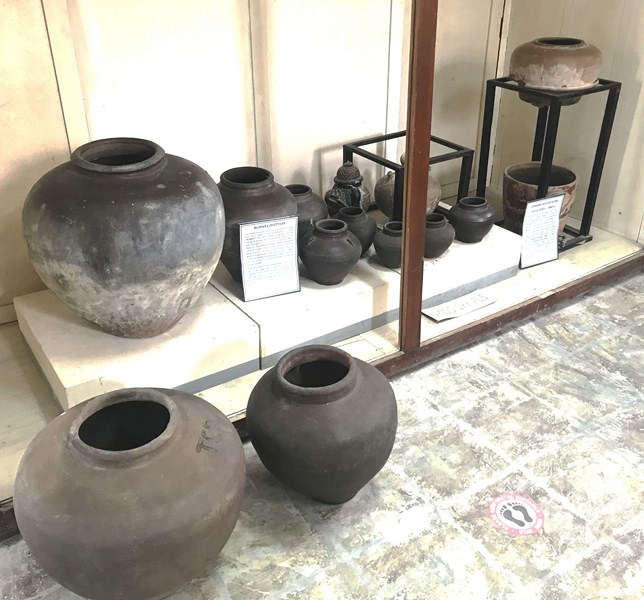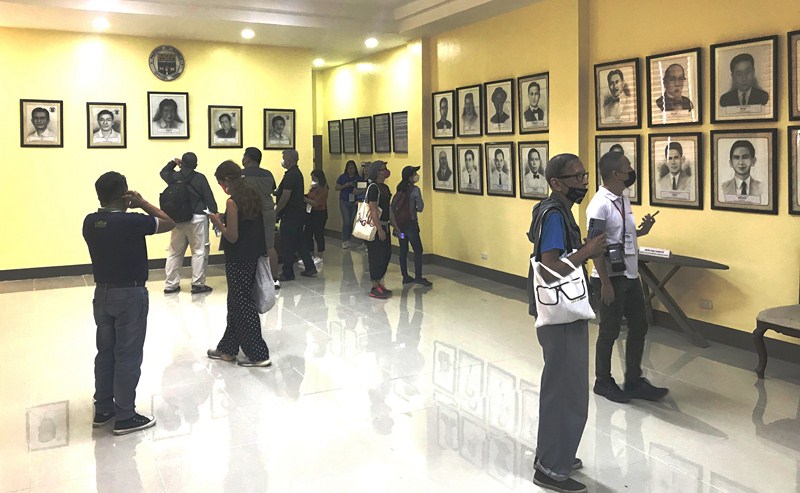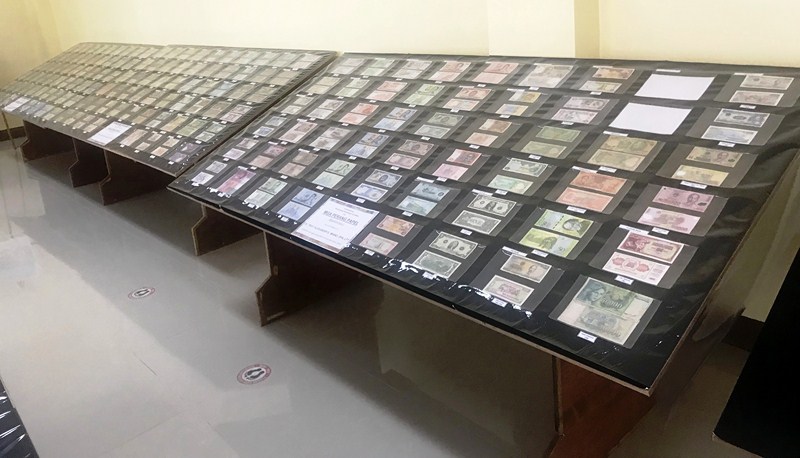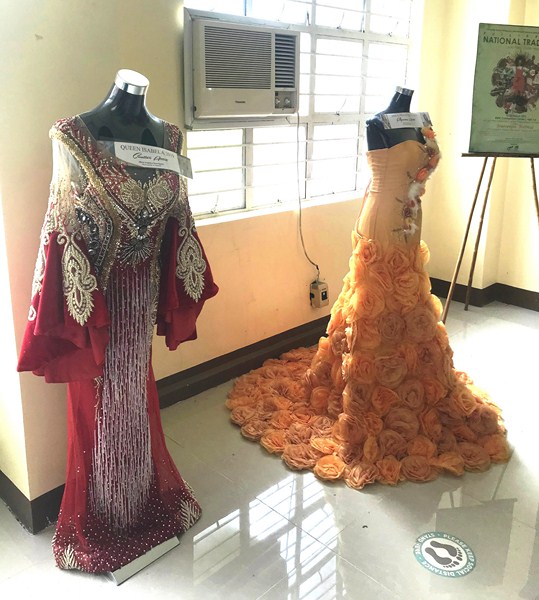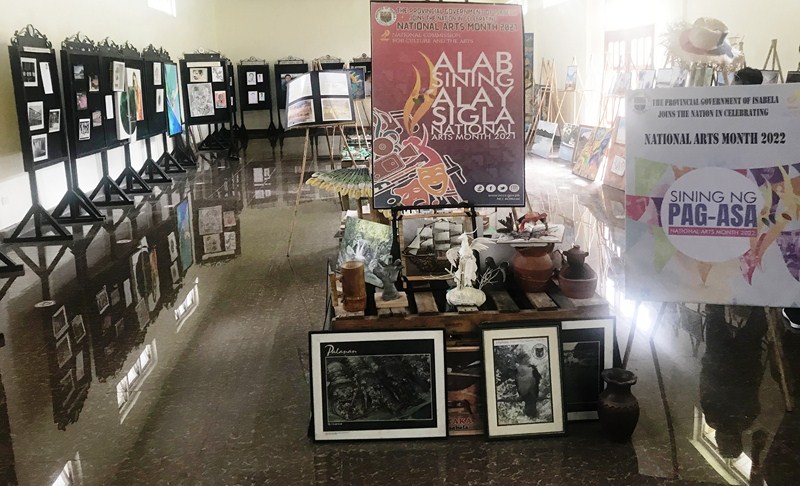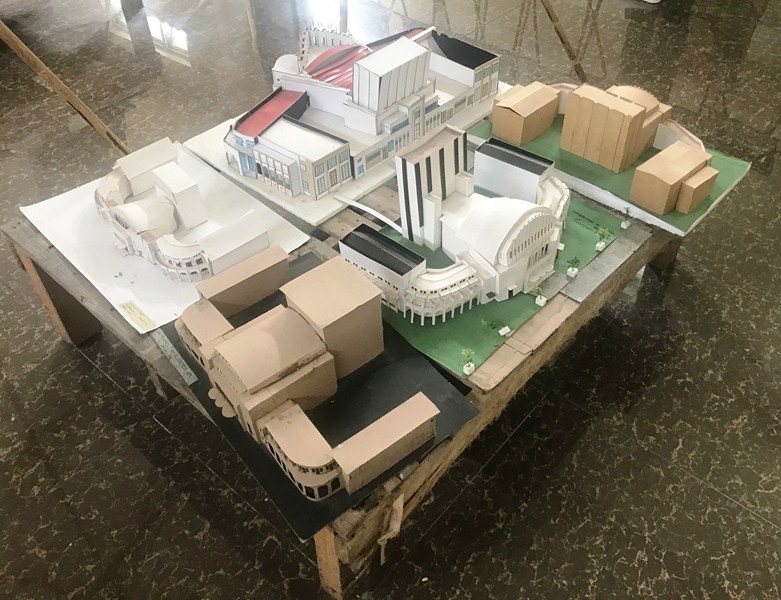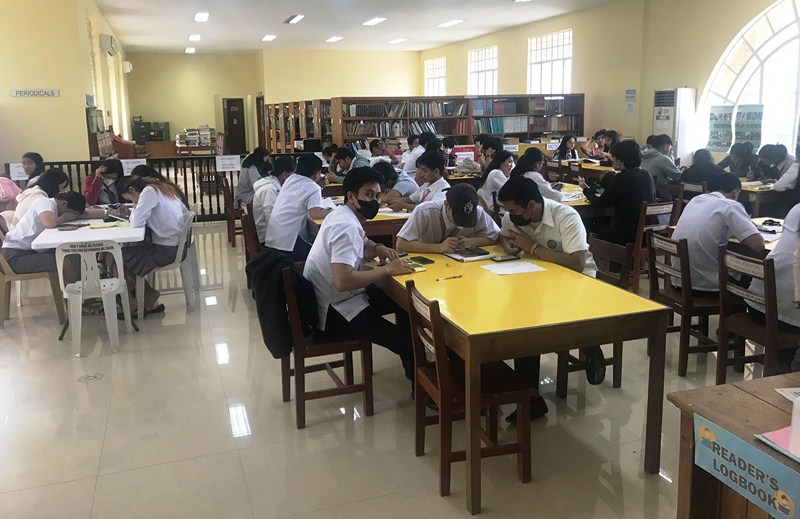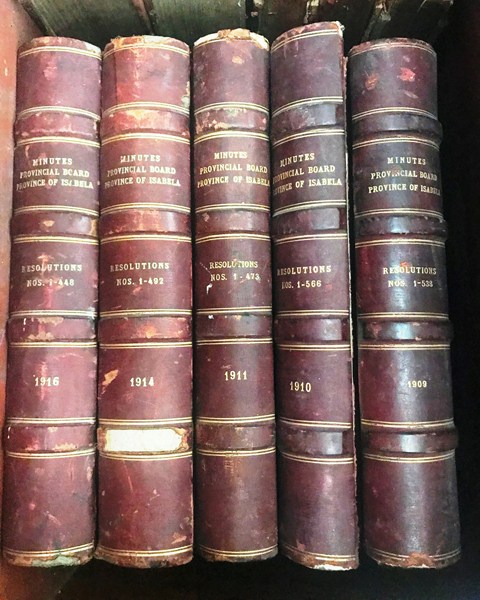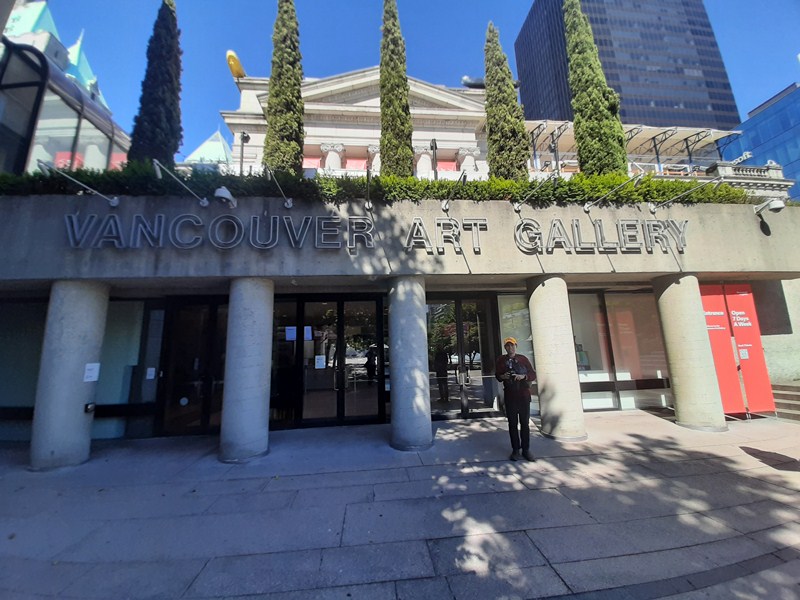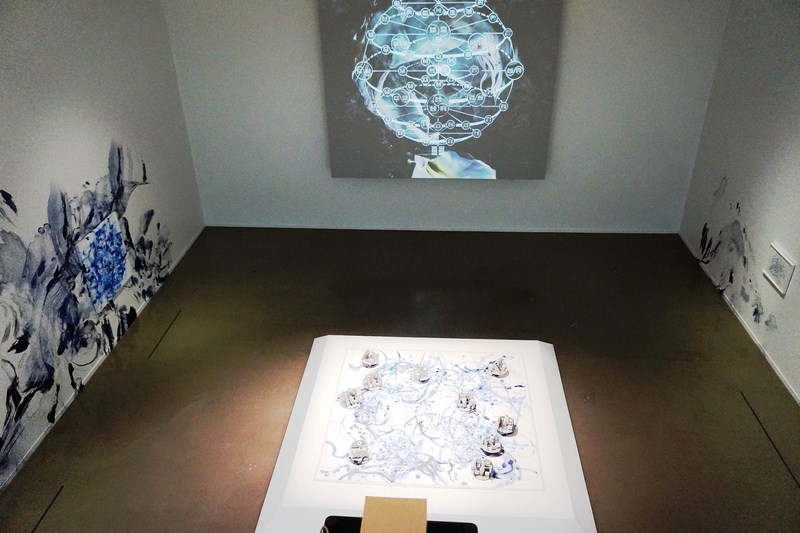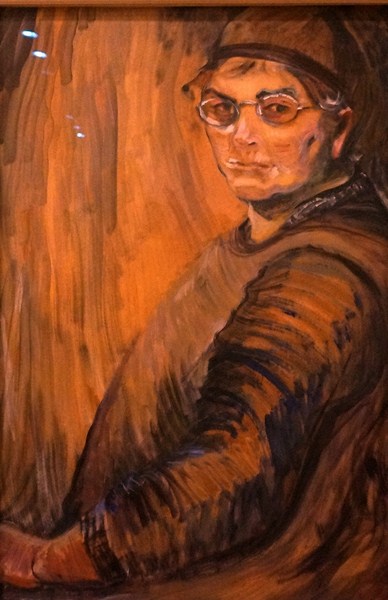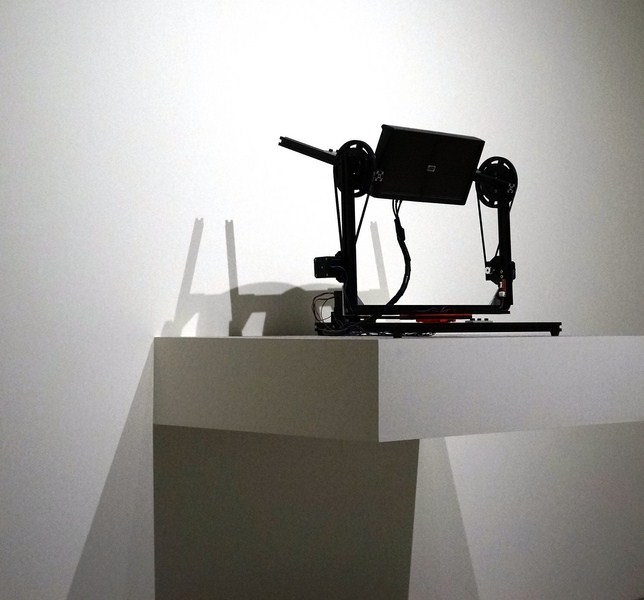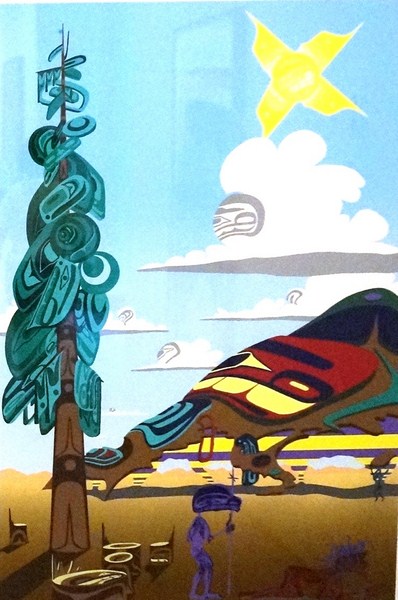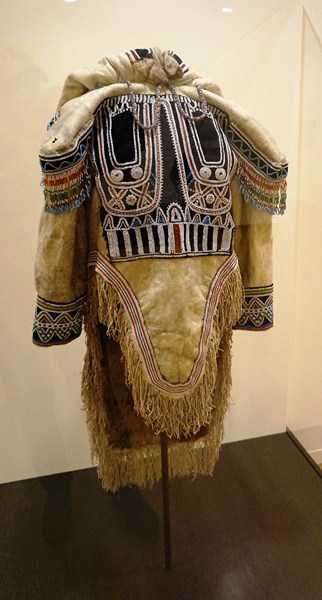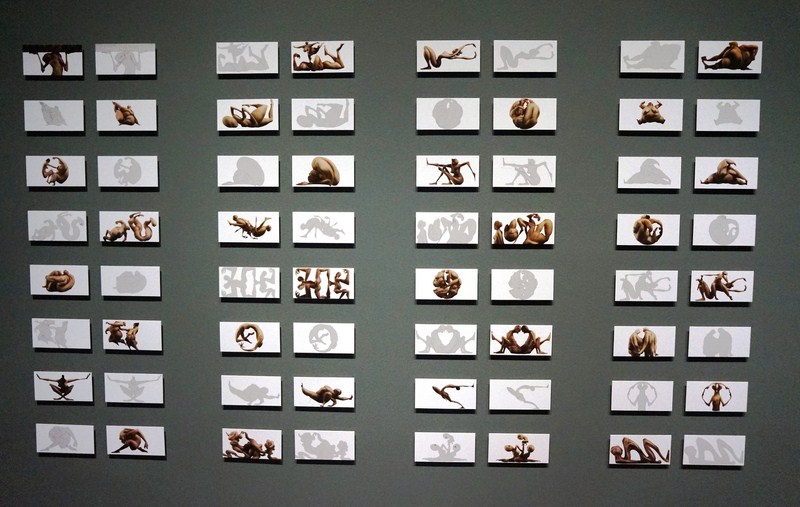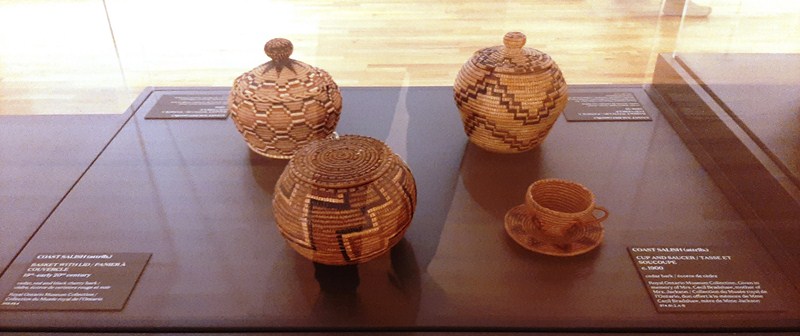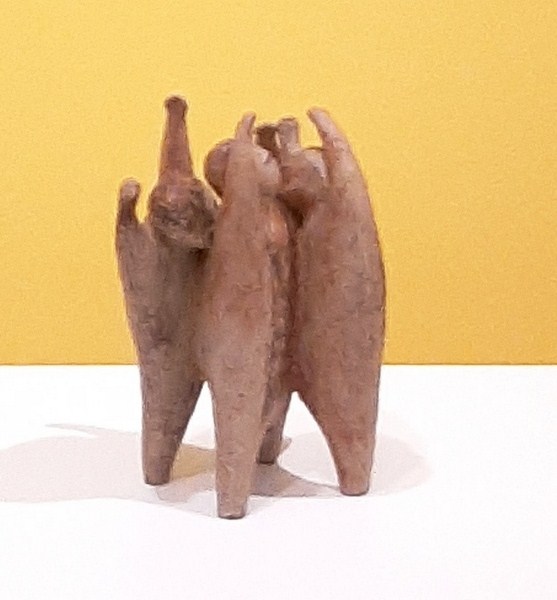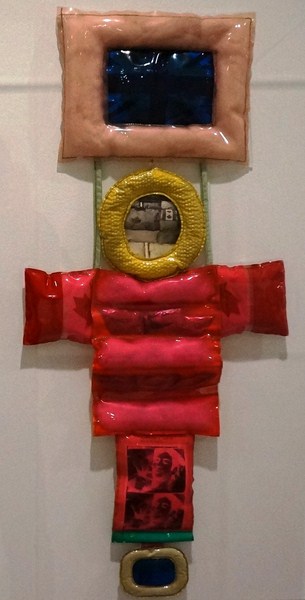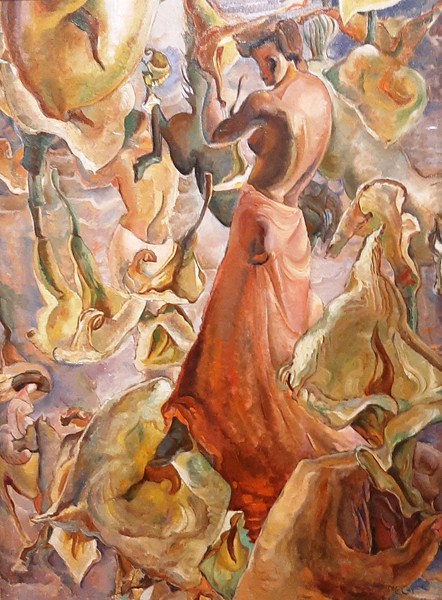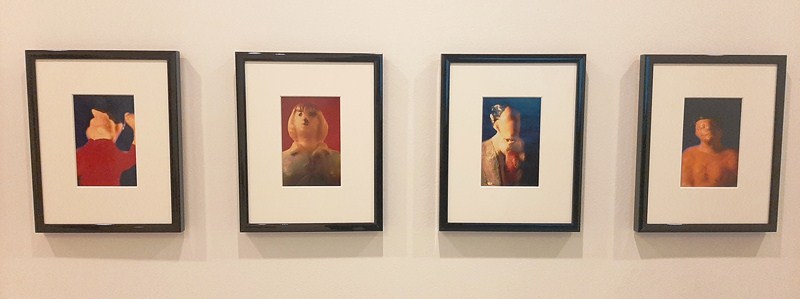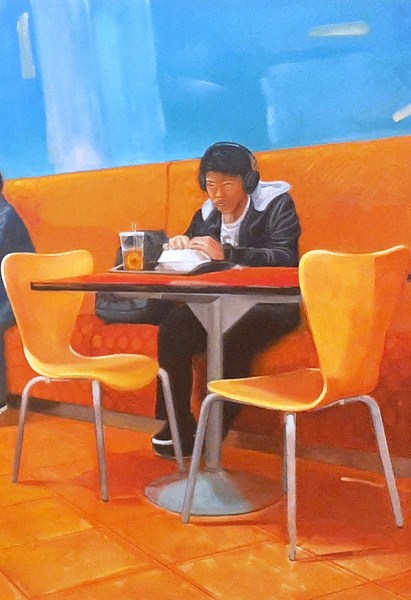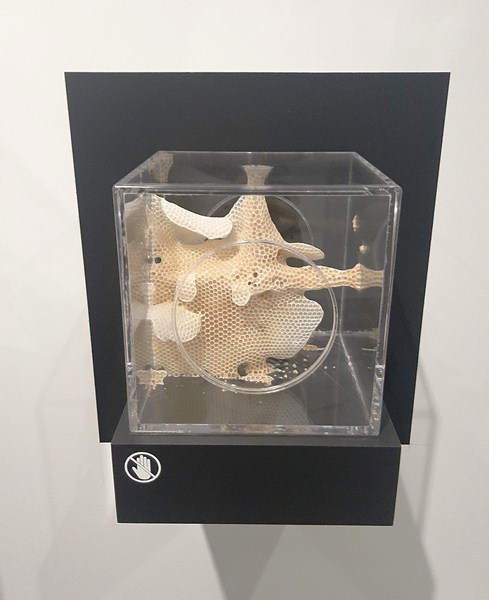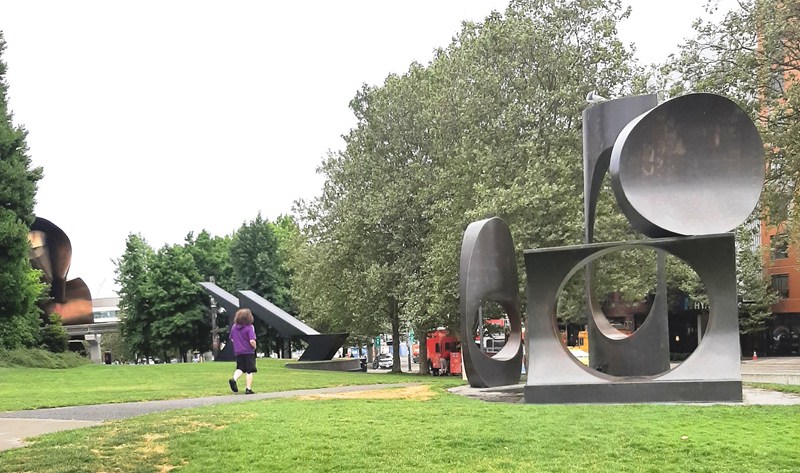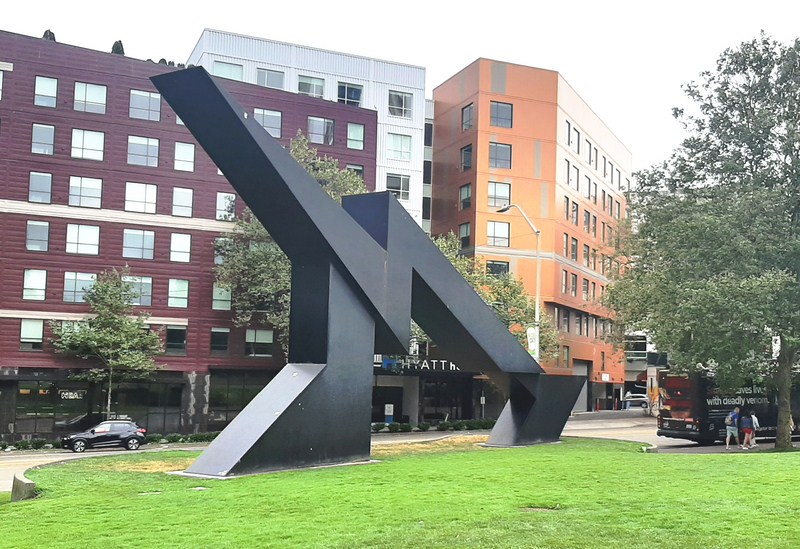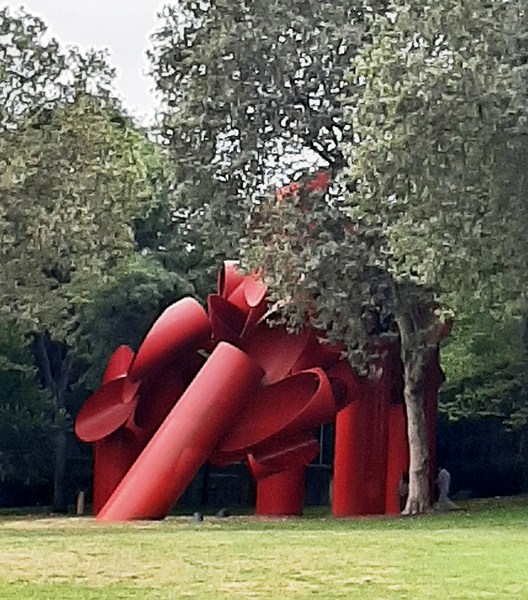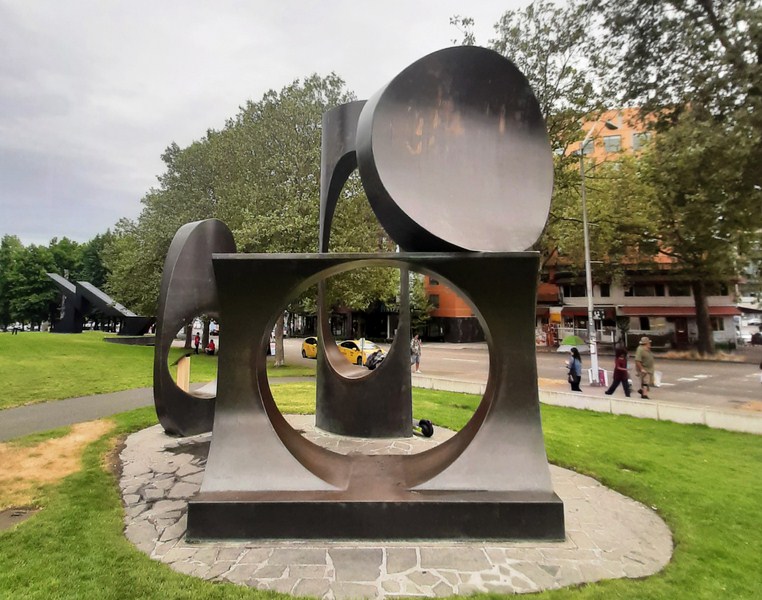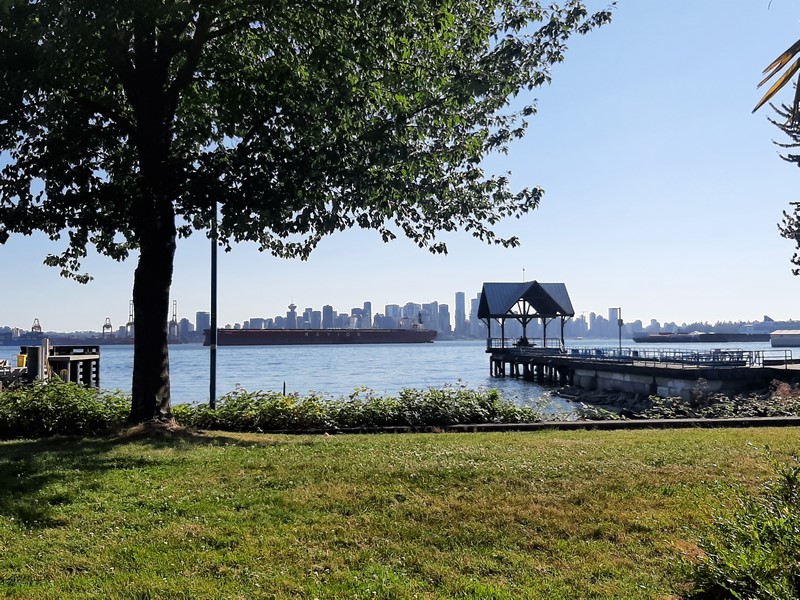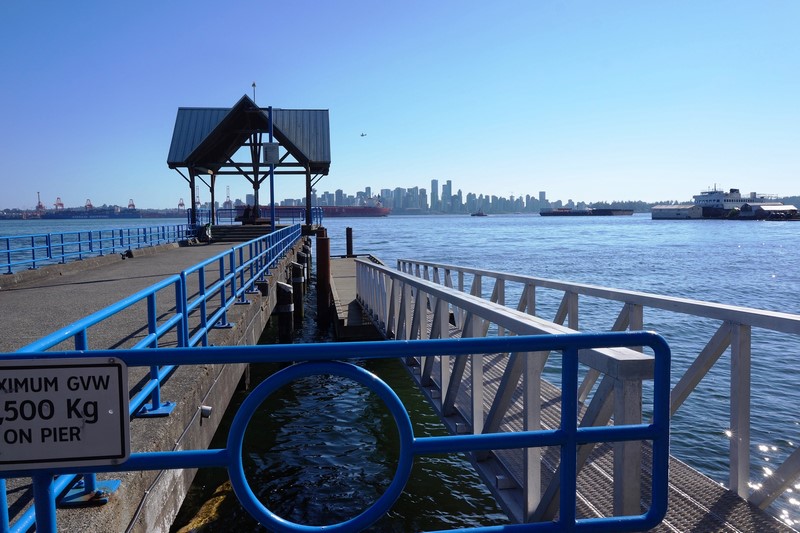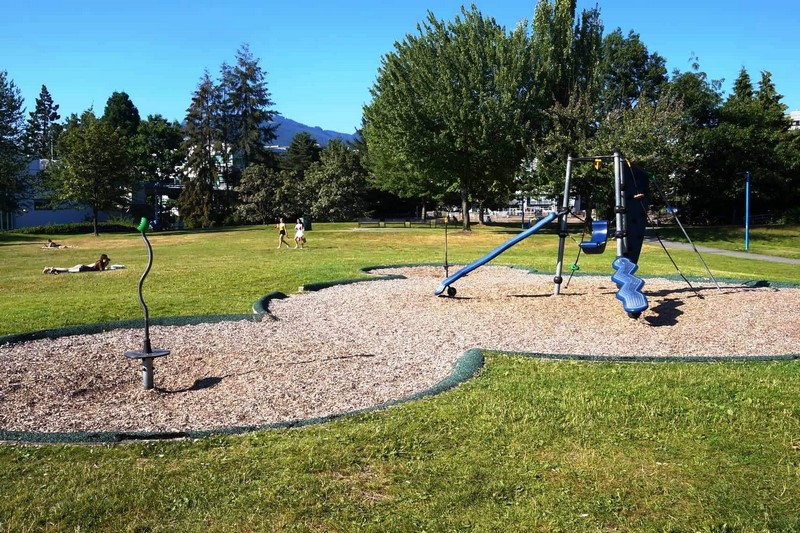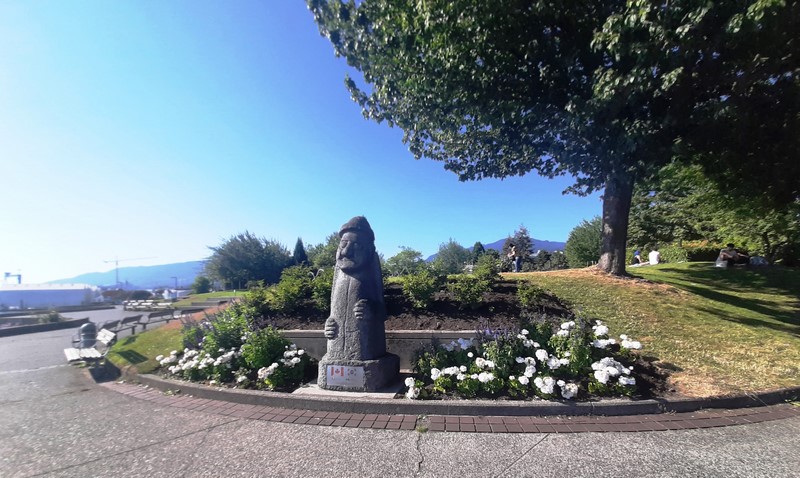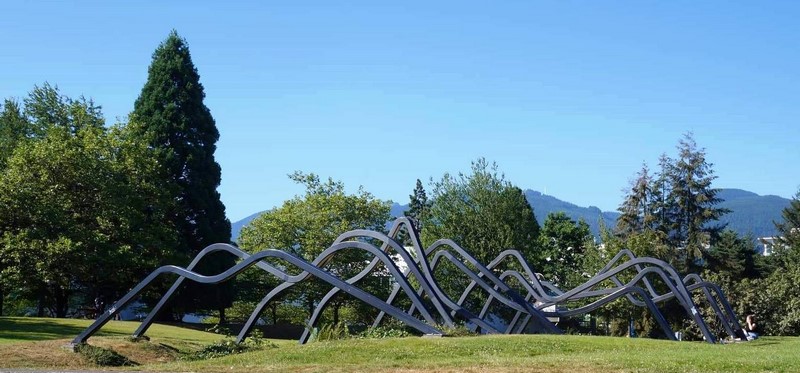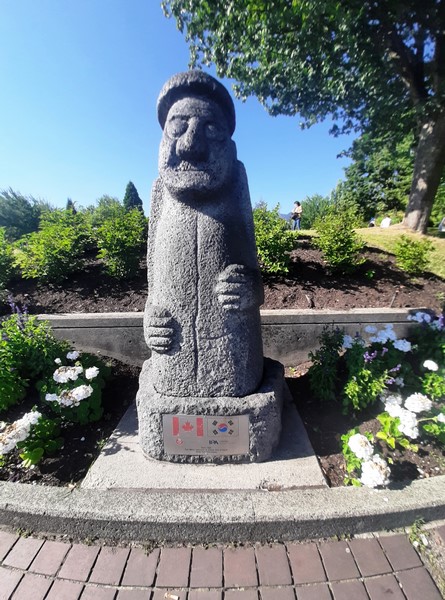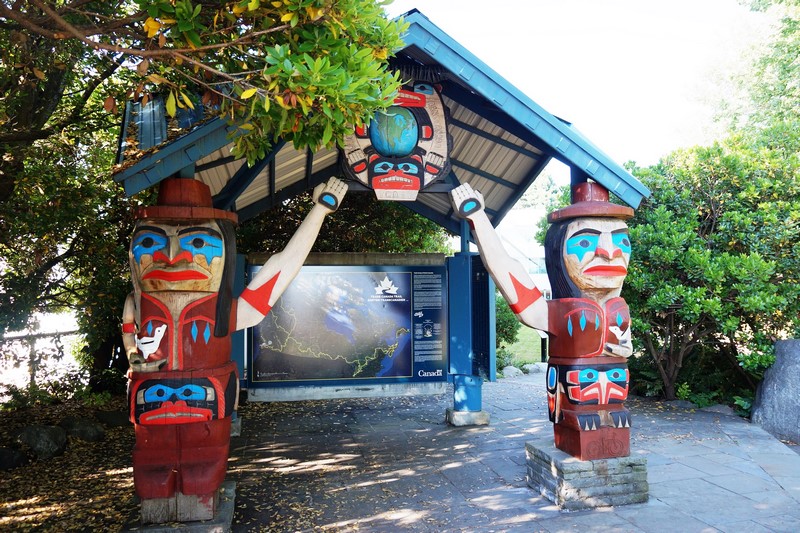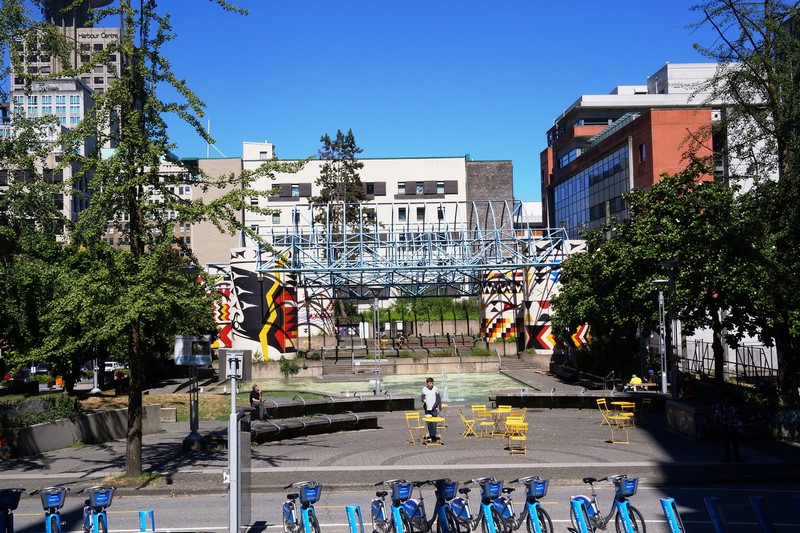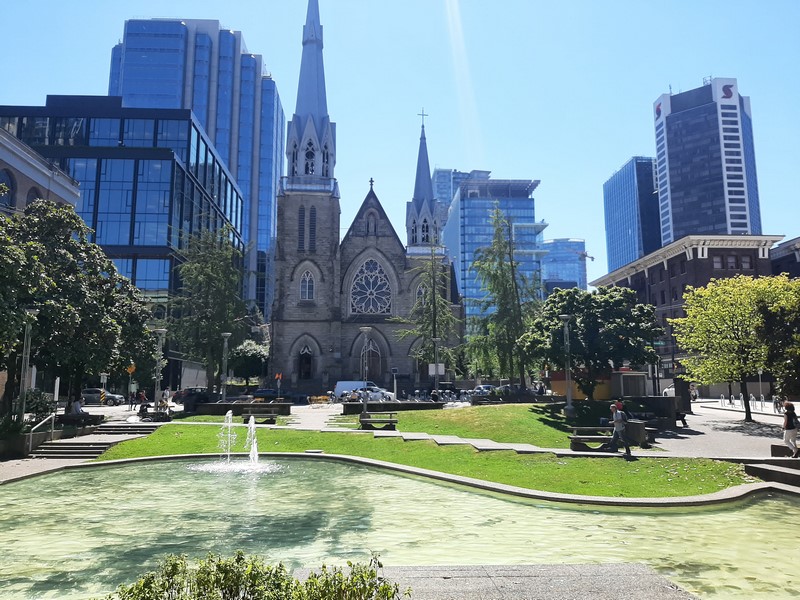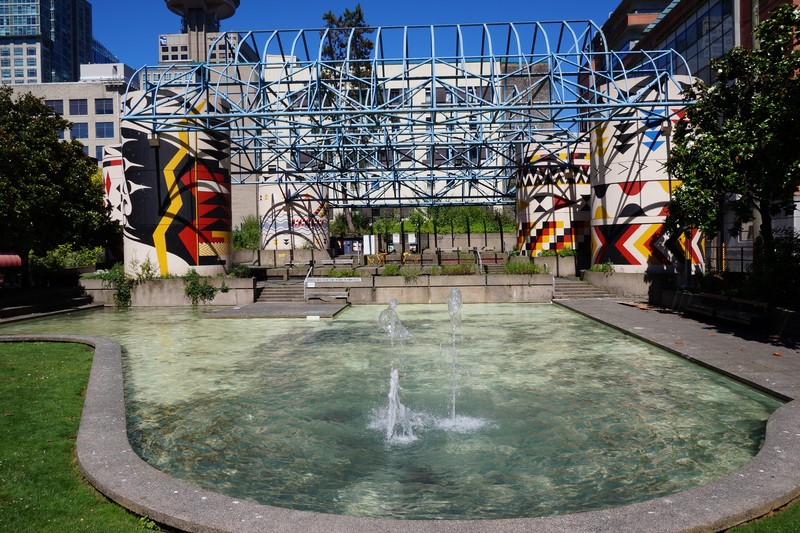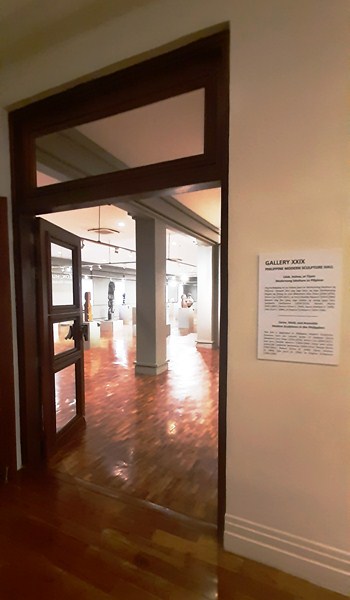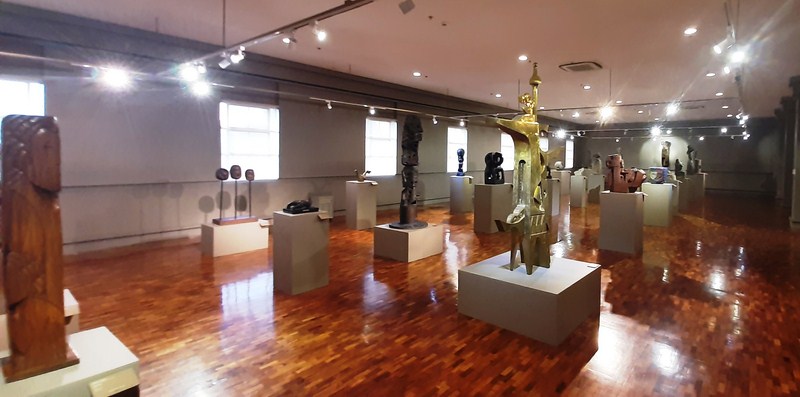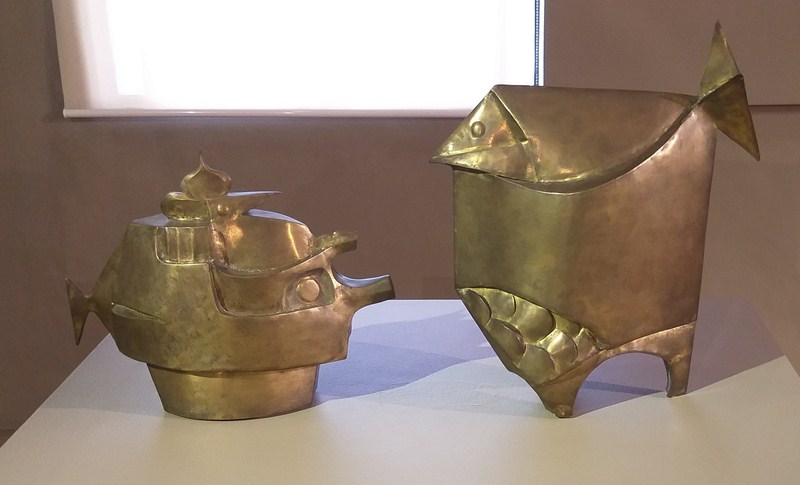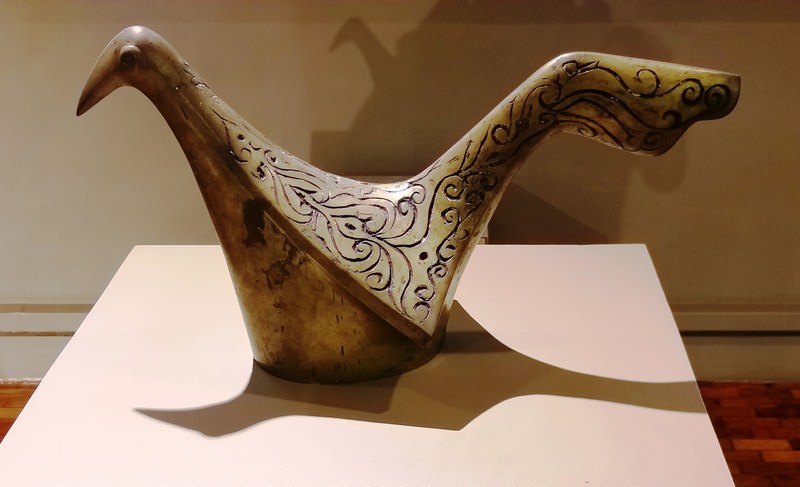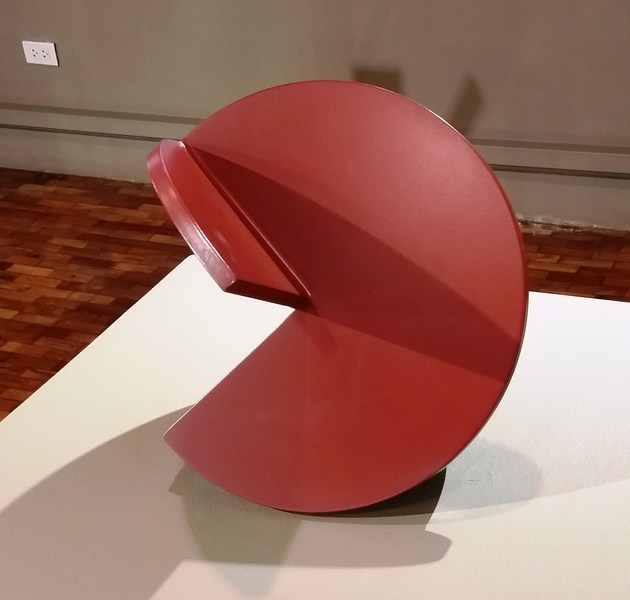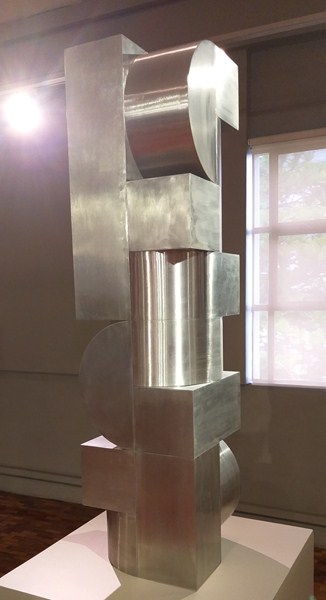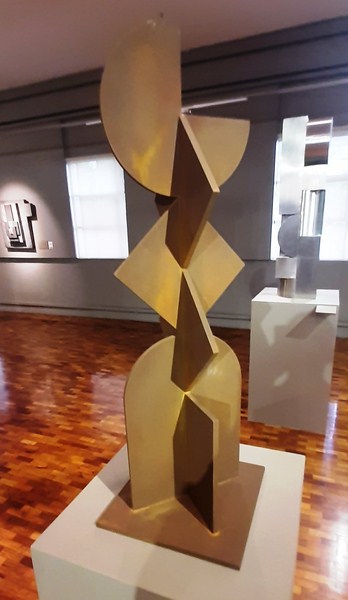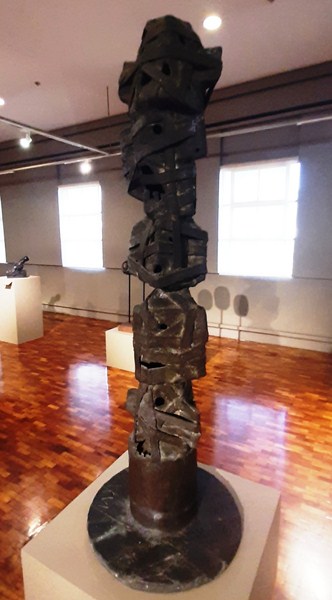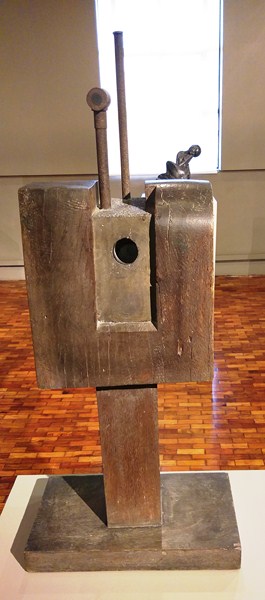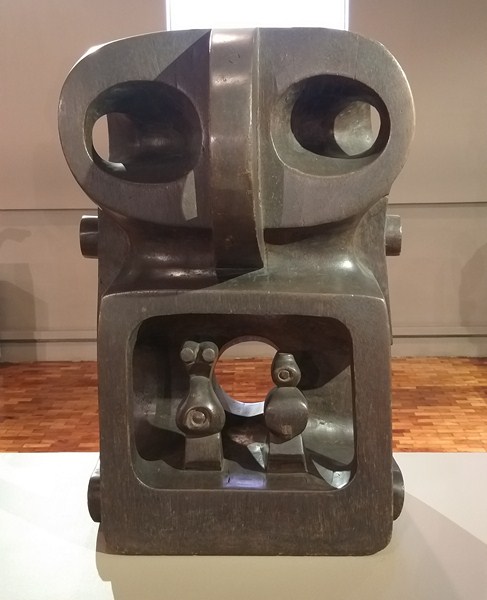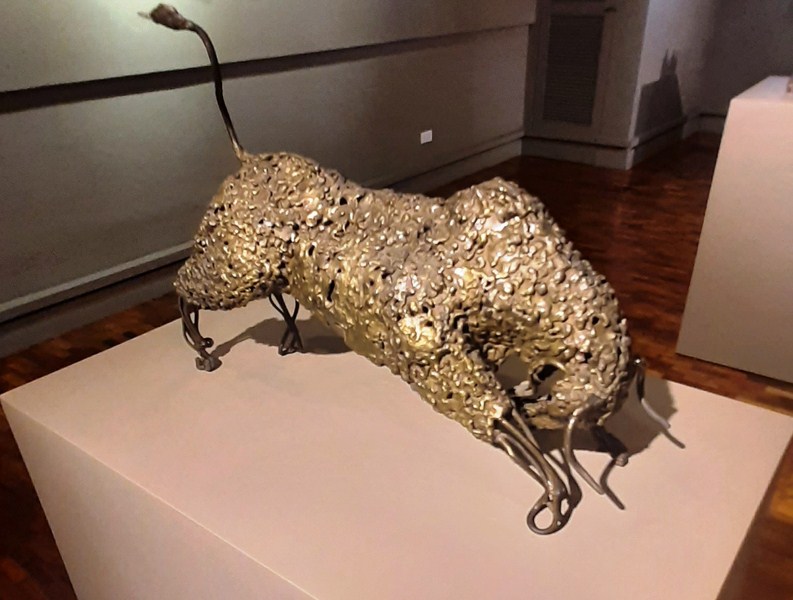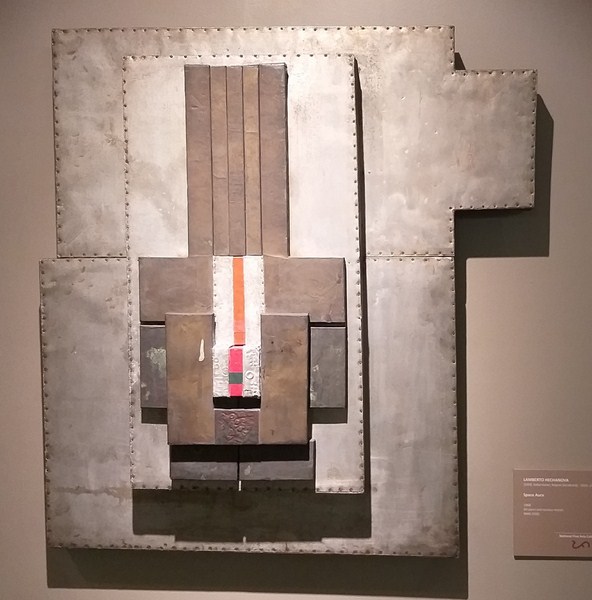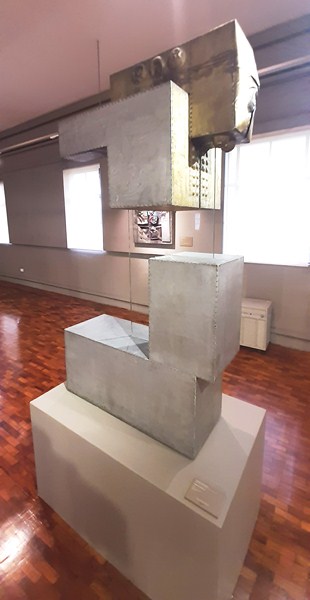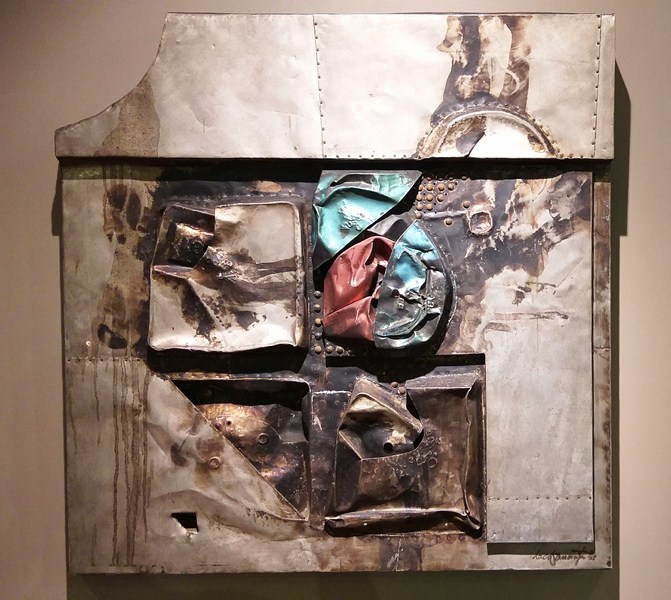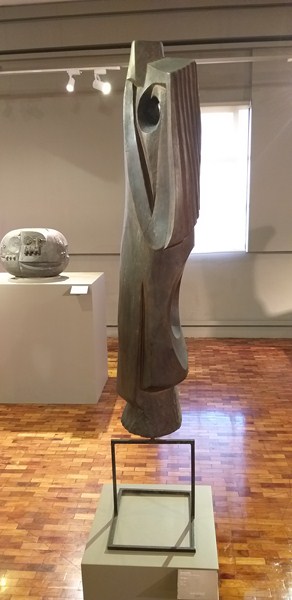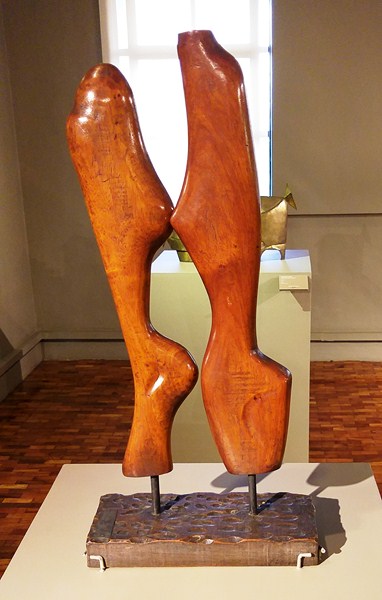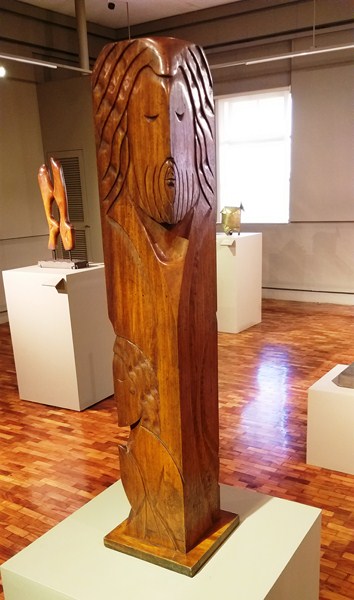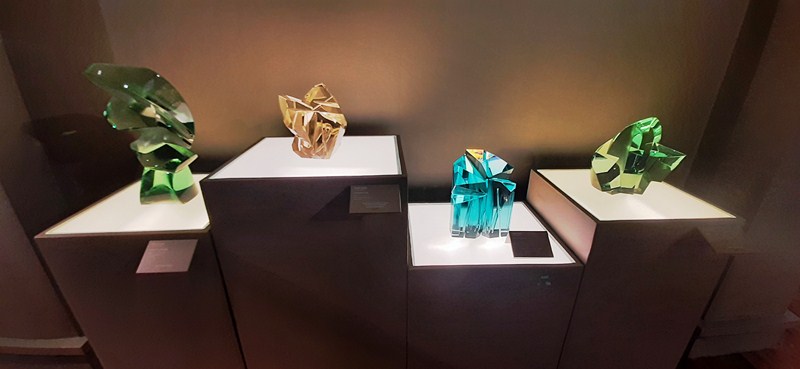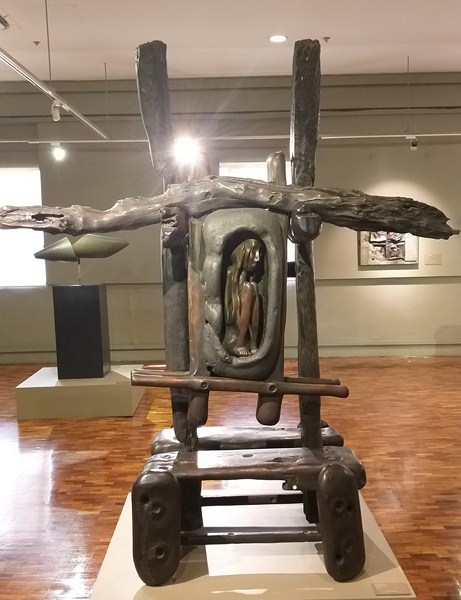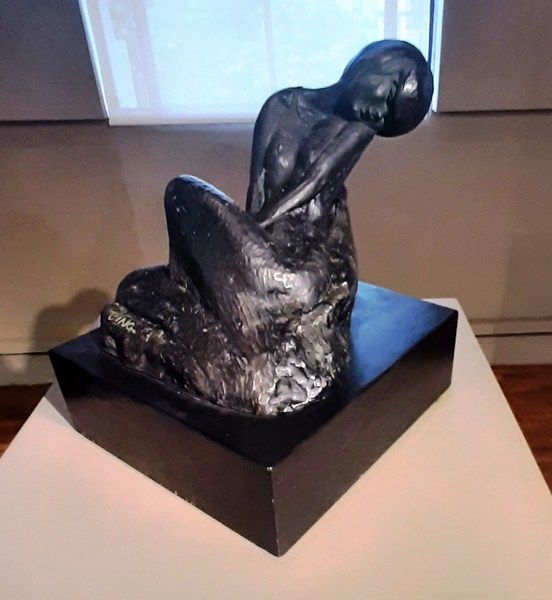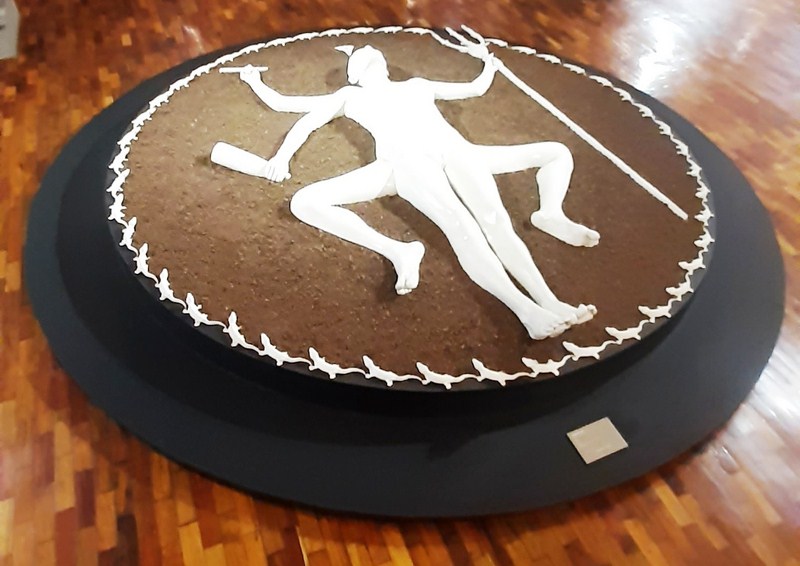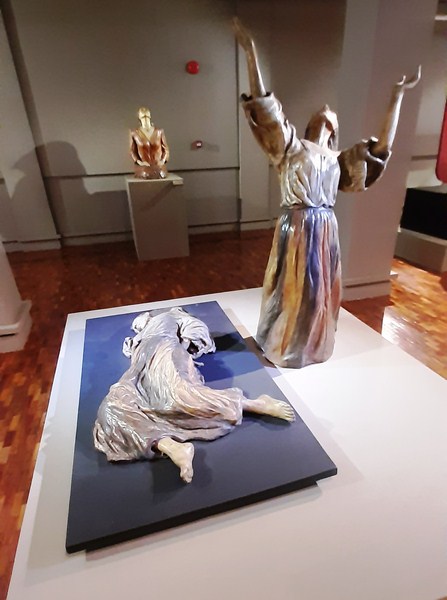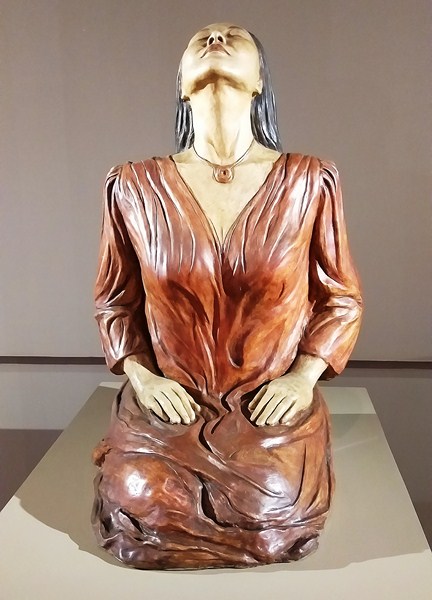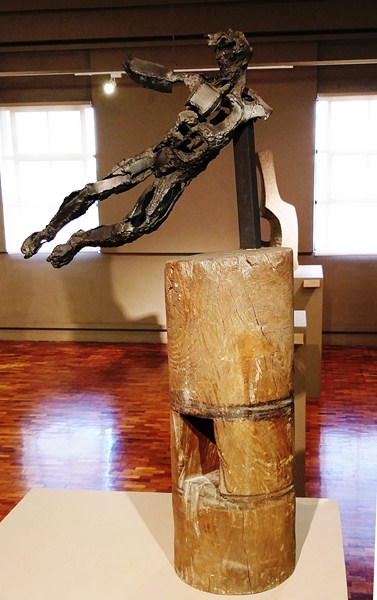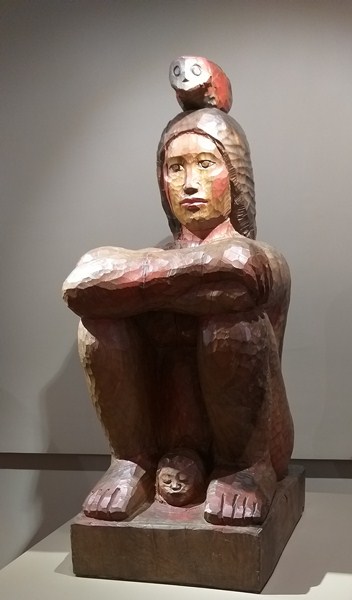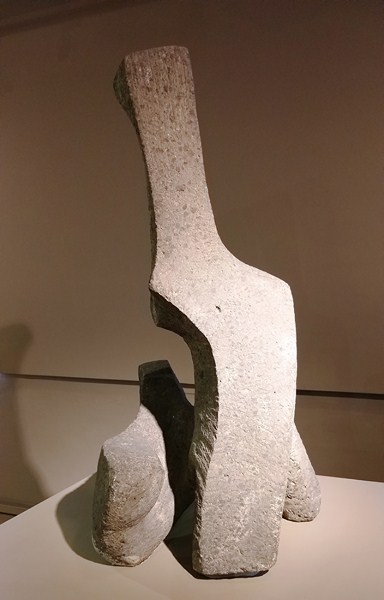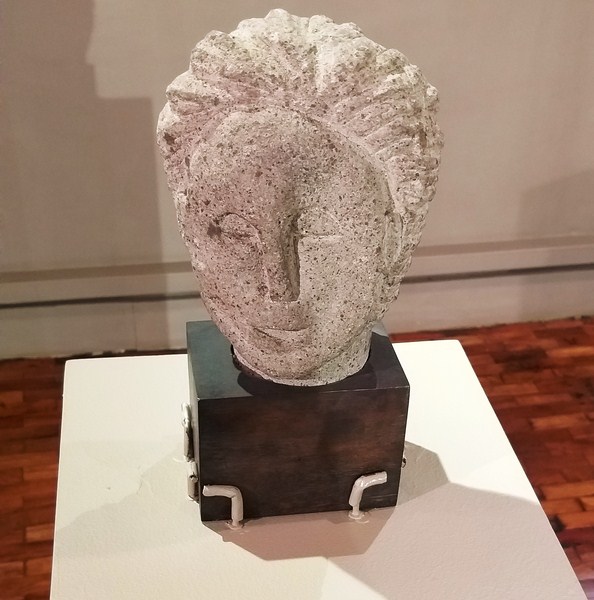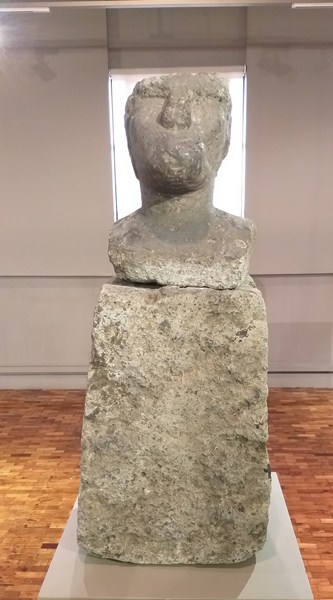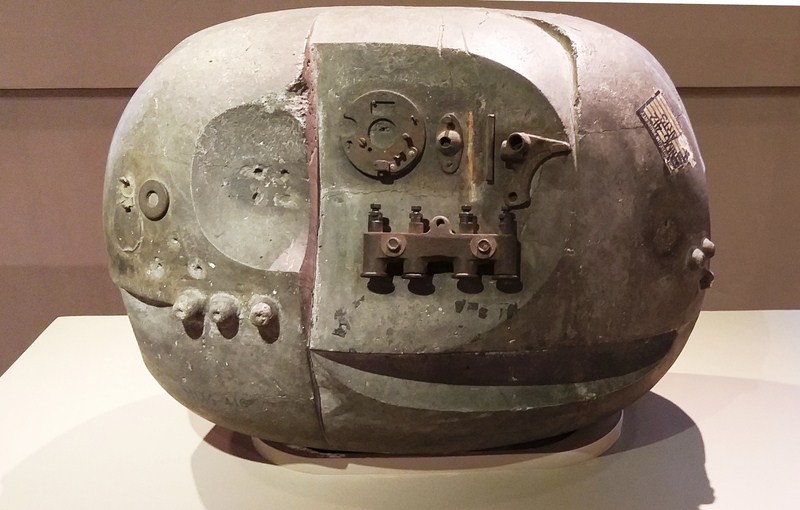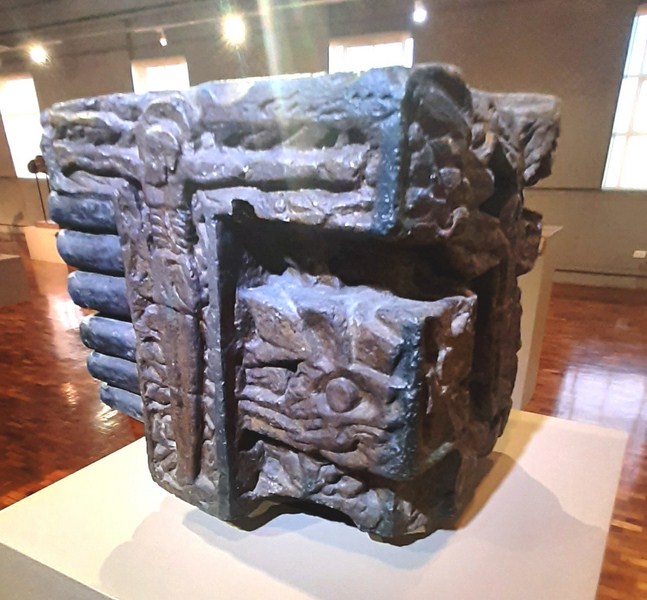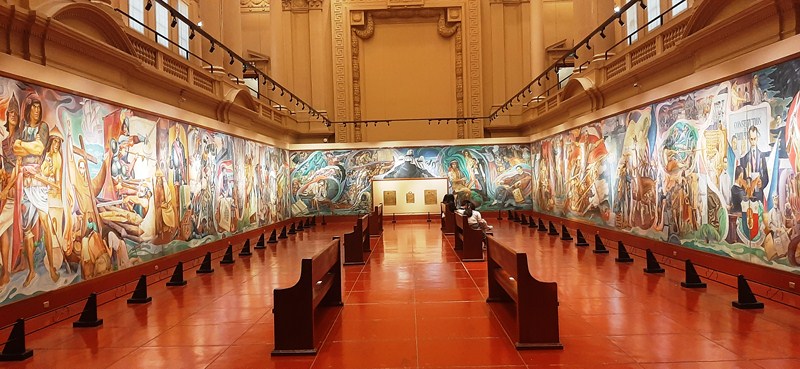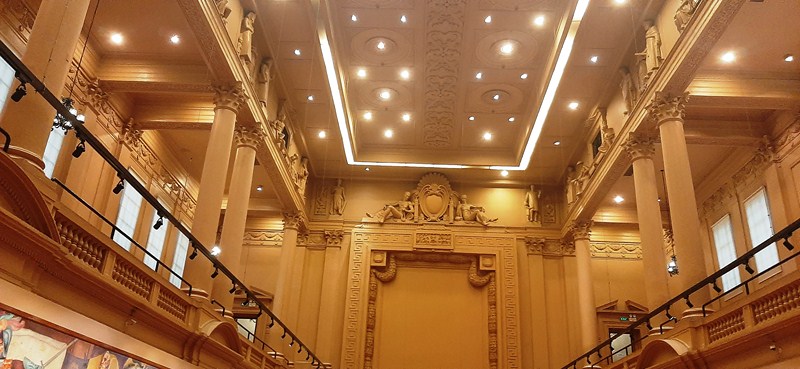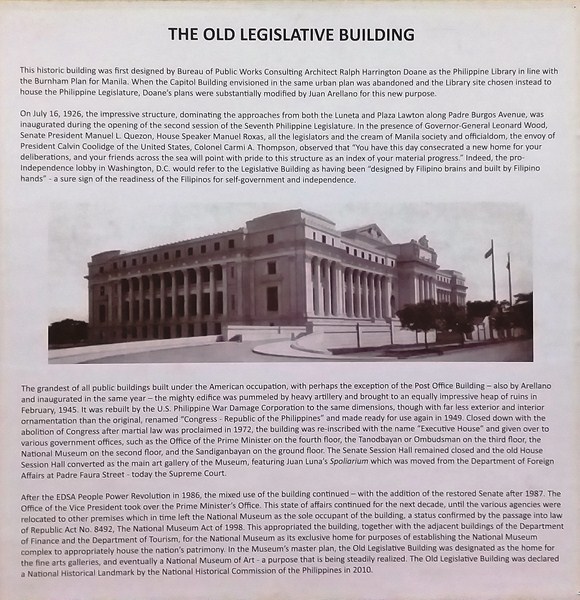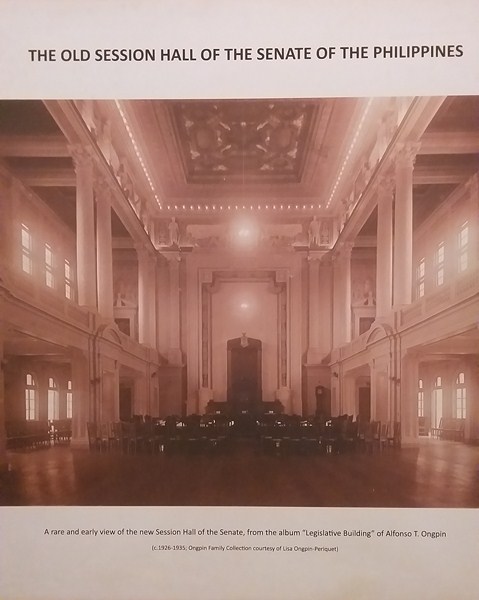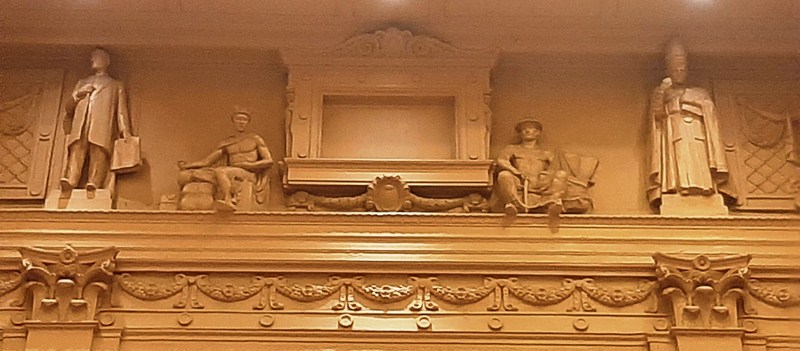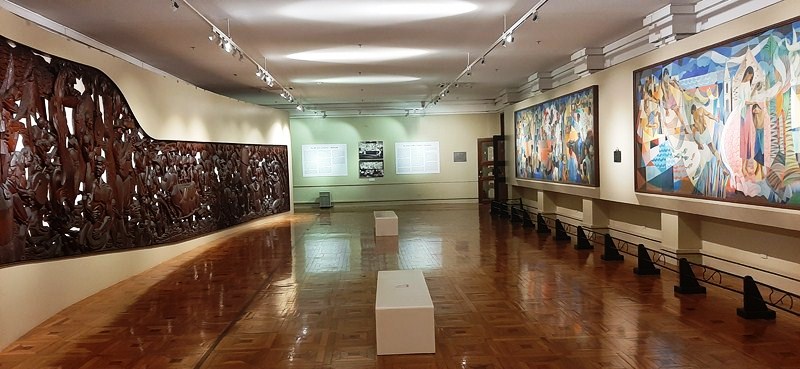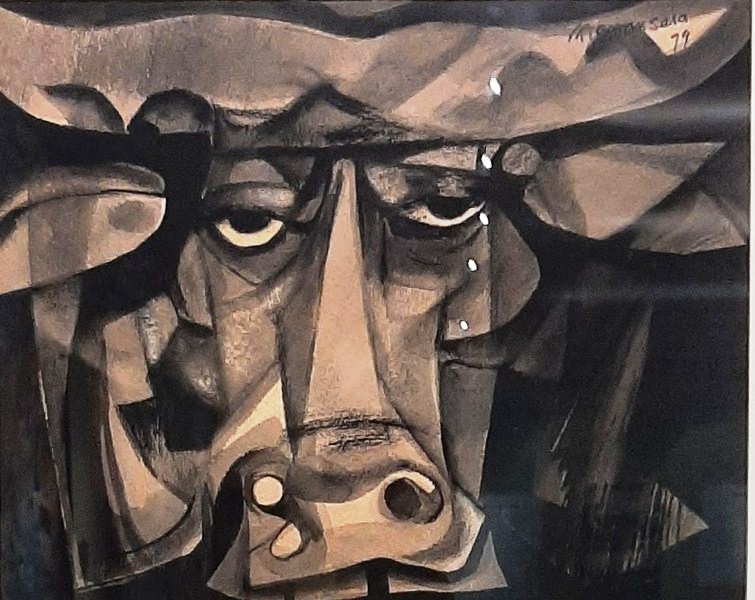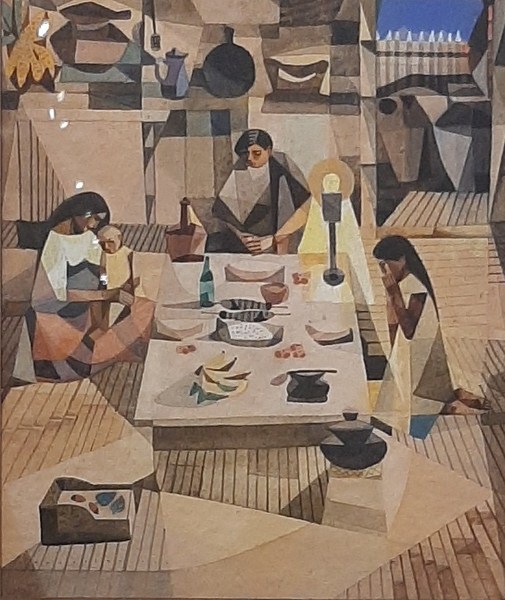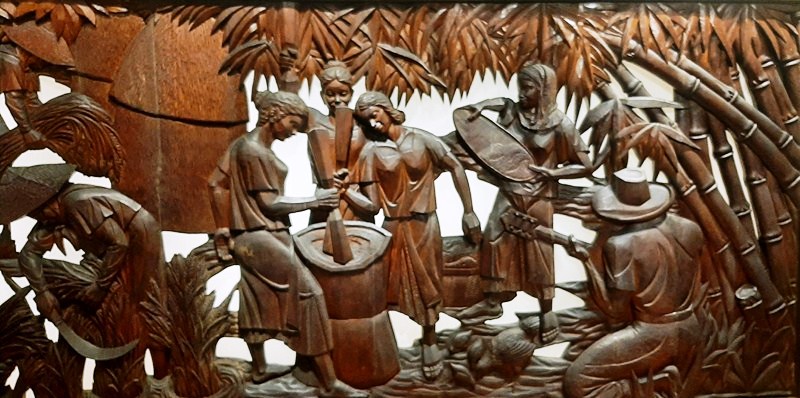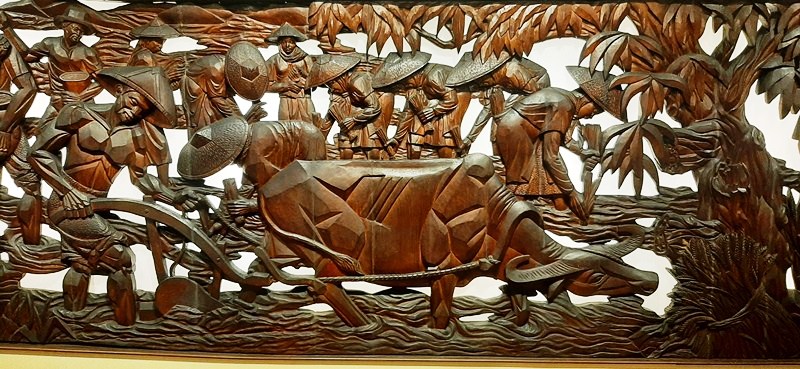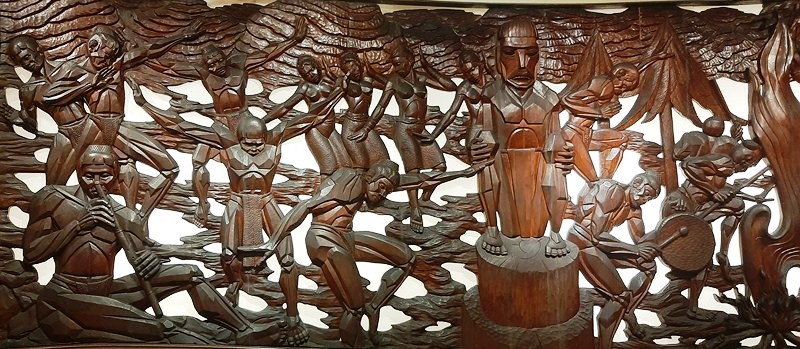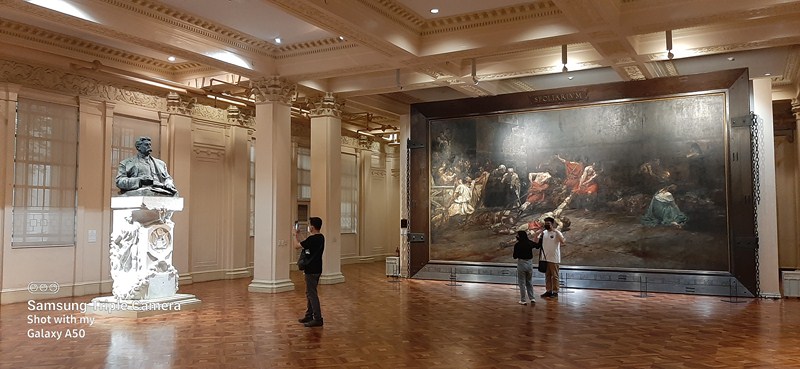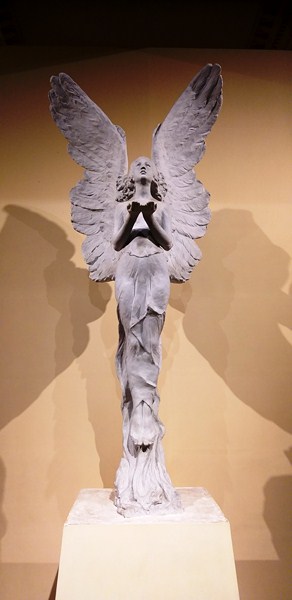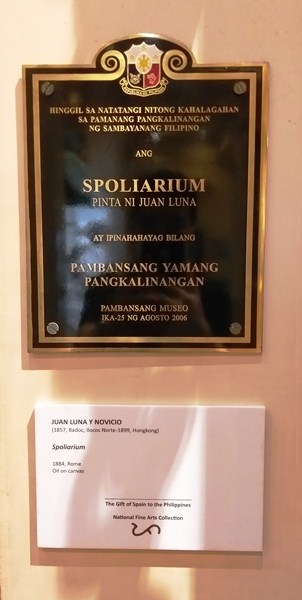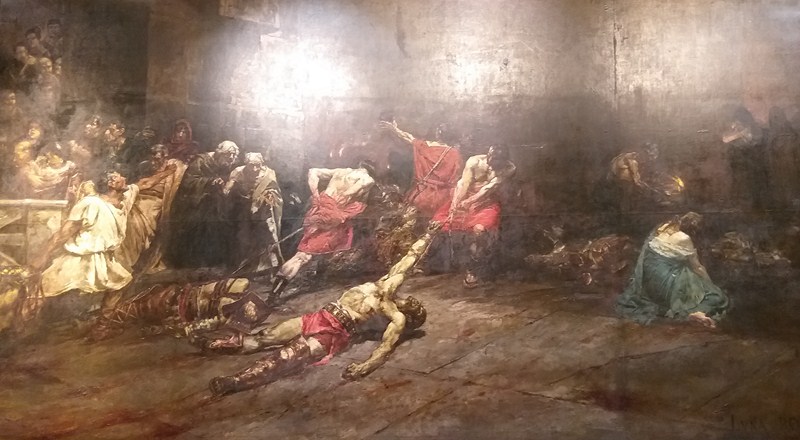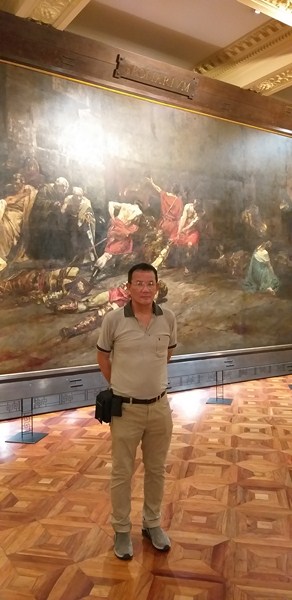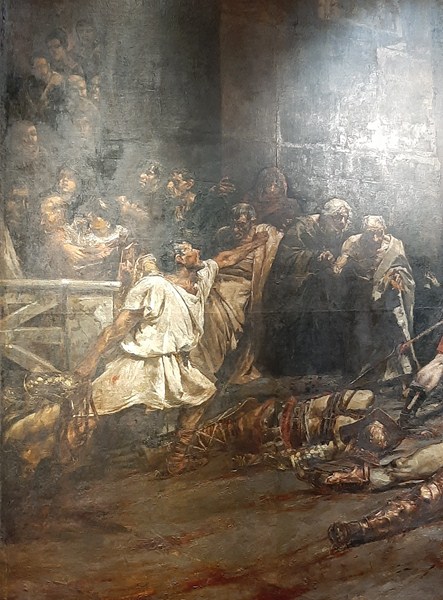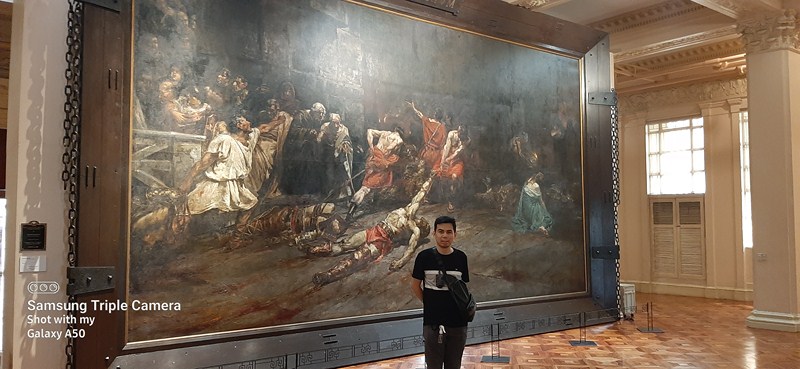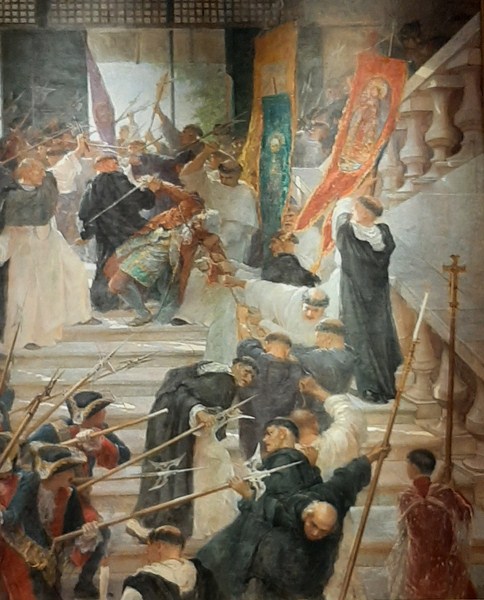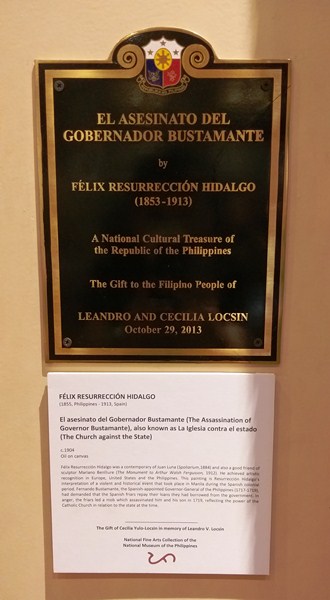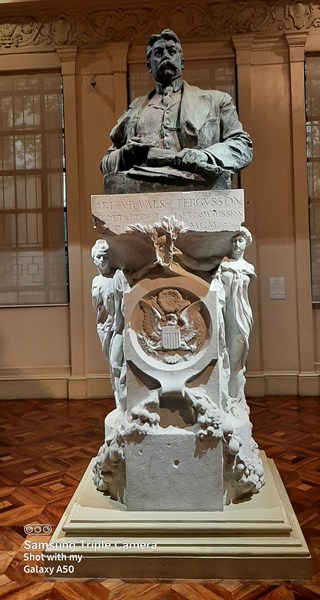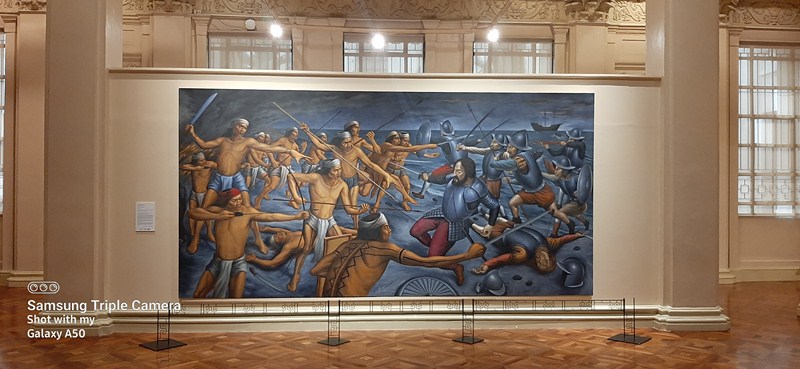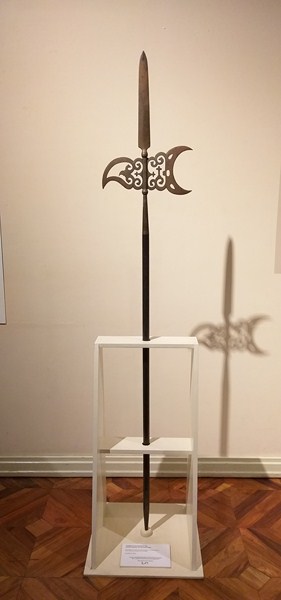After our pottery tour at Brgy. Poblacion 3, we again boarded our bus for the short 7.1-km. (20-min.) drive, via the Enrile-Santa Maria Rd., to Balay San Jose within Rancho Agripina, owned by Santa Maria Mayor Hilario “Larry G. Pagauitan, whose Sanctaurio de San Jose (a favorite wedding venue) and Casa di Spiritualita di San Giuseppe (a retreat center) are visited by tourists and religious pilgrims.
Upon entering the gate, our bus drove along a dirt road lined with life-side statues depicting the Stations of the Cross (Via Crusis).
Upon arrival, we first dropped by the Sanctuario de San Jose, a chapel was built in memory of Maria Lourdes Gatan Pagauitan (November 19, 1988 – June 12, 2008), the mayor’s and his wife Sofie’s late daughter who died in a car accident. It was solemnly blest and its altar dedicated on November 19, 2015 (Maria’s birthday) by Most Rev. Sergio L. Utleg, D.D., Archbishop of the Metropolitan Archdiocese of Tuguegarao.
AUTHOR’S NOTES
The chapel has a two-level Baroque-style façade topped by a triangular pediment and flanked by three-storey, square bell towers topped by a dome and cross. The first level has an entrance portico (topped by angel statues) which has a statue of St. Joseph with the Child Jesus and is flanked by, flat pilasters, 3 semicircular arch stained glass windows and a semicircular arch statued niche.
The second level has a similar set up, the only difference being the statued niche above the entrance portico. The triangular pediment has a circular, stained glass rose window within a bas-relief of a Jerusalem Cross, a cross potent (or crutch cross) with four Greek crosses.
The first two storeys of the flanking bell towers have semicircular arch blind windows while the receding third storey, housing the church bell, has open, semicircular arch windows.
The left bell tower has the sign of “Banal na Pag-aaral Center, Area 11, Northern Luzon.”
Inside the chapel are three altars (main and two side altars) with exquisitely carved retablos (altar backdrop), a painted barrel vaulted ceiling, colorful stained glass windows, religious statuary and a triforium (interior gallery)
Connected to the chapel, on it’s left, is the Casa di Spiritualita di San Giuseppe (St. Joseph House of Spirituality), which was solemnly blest on September 19, 2014 by Bishop Joseph A. Nacua, O.F.M., Cap. D.D. of the Diocese of Ilagan. This retreat house has has 42 airconditioned rooms with private bath, four dormitories (two large and two small), refectories, conference hall, lunch room, chapels and a beautifully landscaped garden. In front is an open air lanai topped by a view deck which is accessed by stairs.
In front of the chapel are statues of Christ Resurrected, St. Michael the Archangel and Tablets of the Ten Commandments. On the right side of the chapel is a tableau depicting Christ Appearing Before his Disciples.
We also dropped by its museum which is filled with reiligous statuary of all sizes, paintings, photos and other religious artifacts such as monstrances, chalices, crucifixes, etc..
Also within Rancho Agripino is St. Joseph Library, Lourdes Chapel, Casa di Marello (for visiting priests and brothers of the Oblates of St. Joseph founded by St. Joseph Marello), Galilee (a cluster of airconditioned huts in the middle of a lake), Chapel of the Santo Sepulchro and the Risen Lord (a chapel with the image of Our Lady of Sorrows and the Risen Christ), The Hermitage (a solitary place for those who want to be alone with the Lord), a helipad and a medical center (MLGP Medical Center).
Balay San Jose: Rancho Agripino, Brgy. Calamagui West, Santa Maria 3330, Isabela.
How to Get There: Santa Maria is located 451.1 kms. (an 8.5-hour drive) from Manila and 67.8 kms. (a 1.5-hour drive) from the City of Ilagan.

